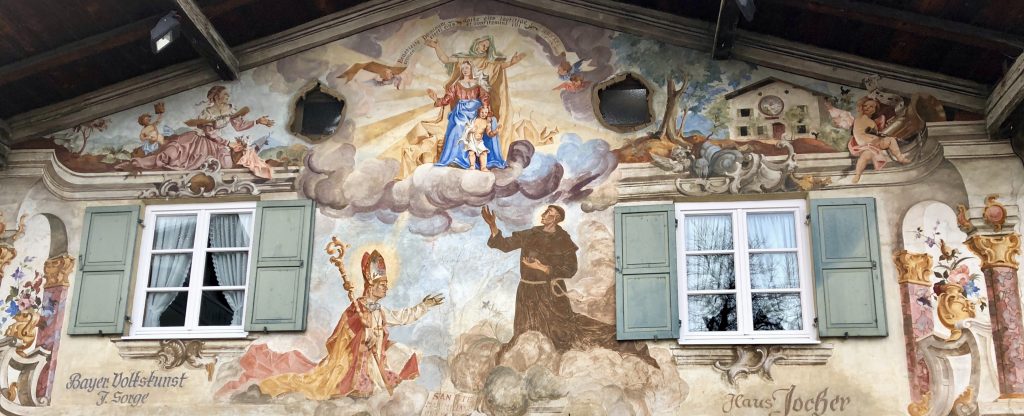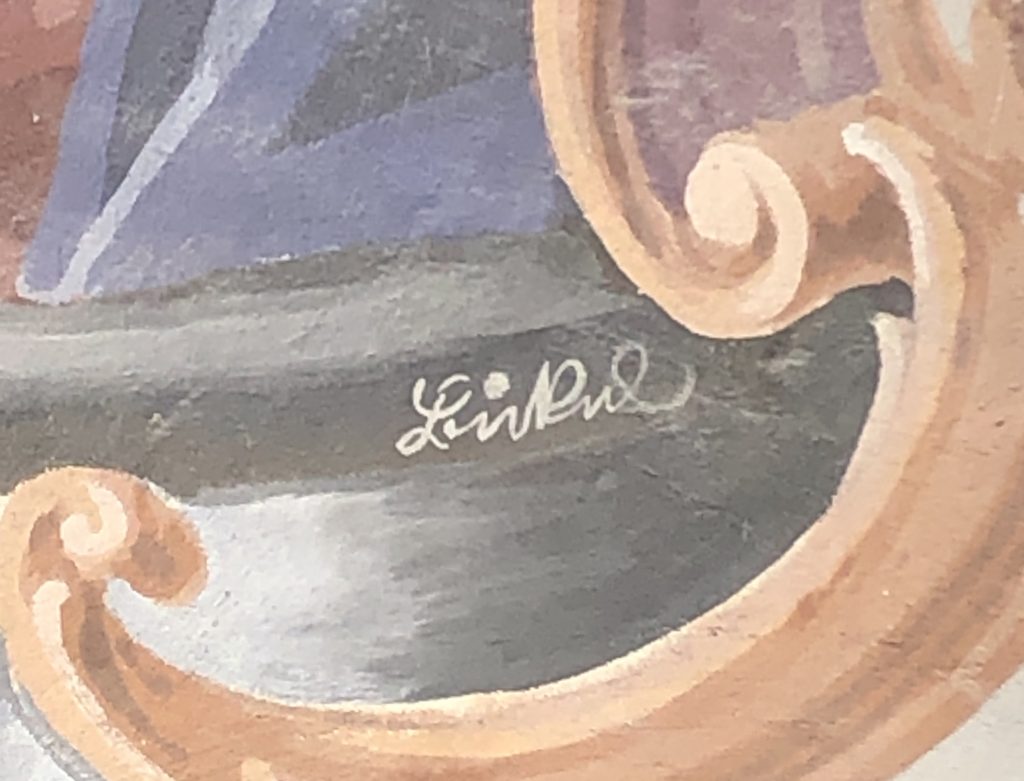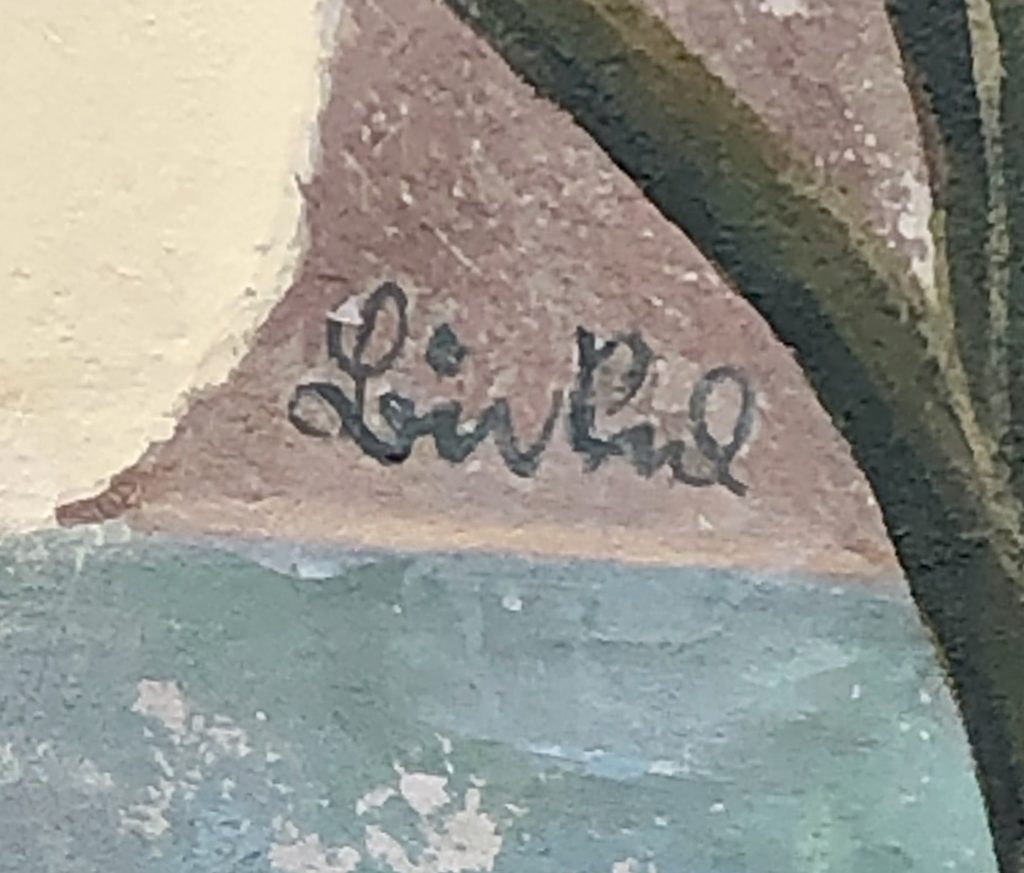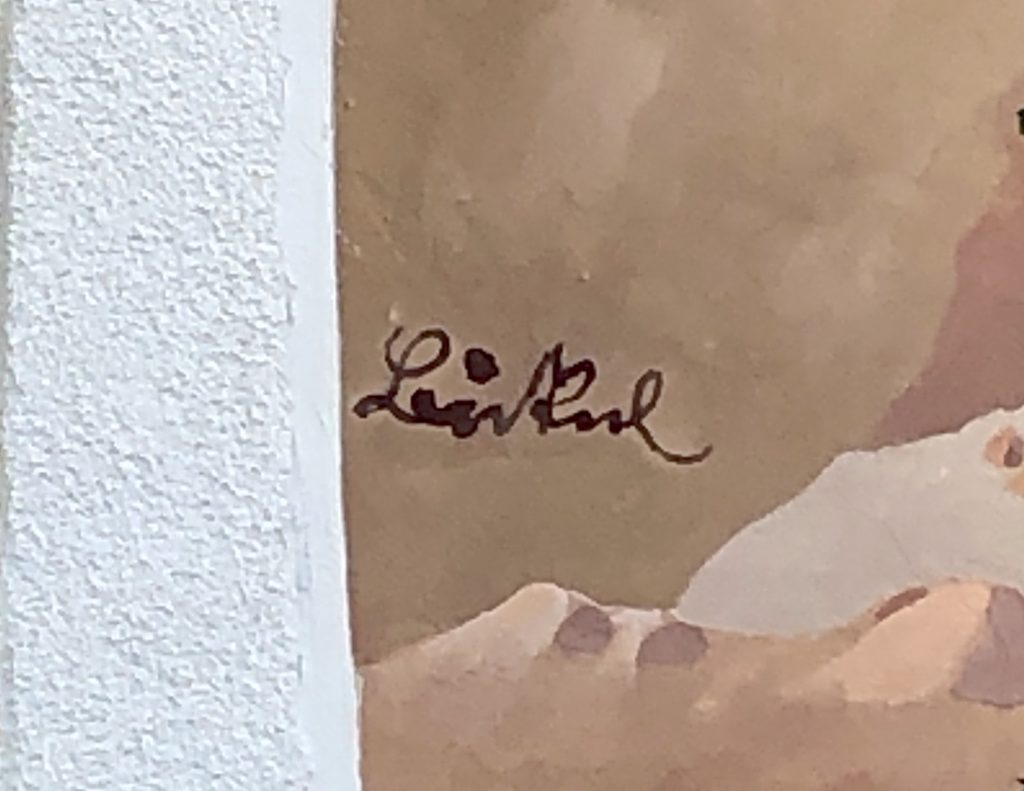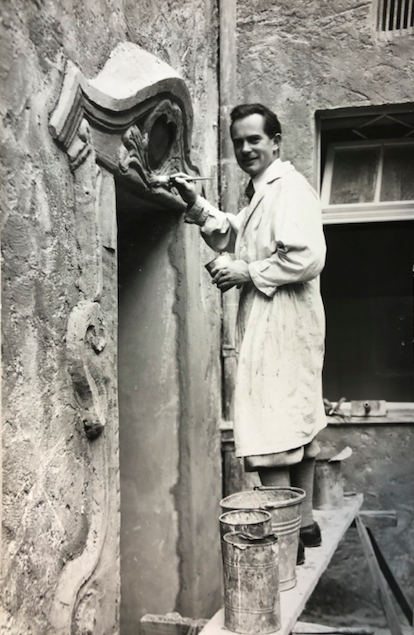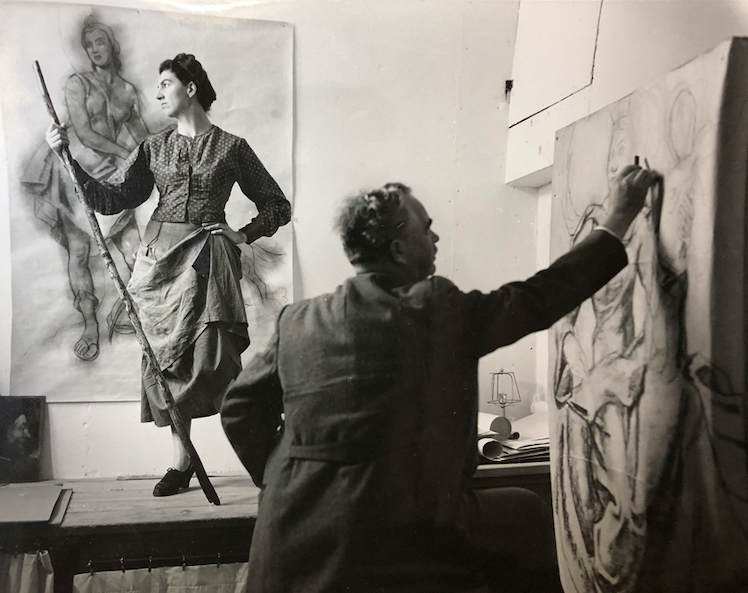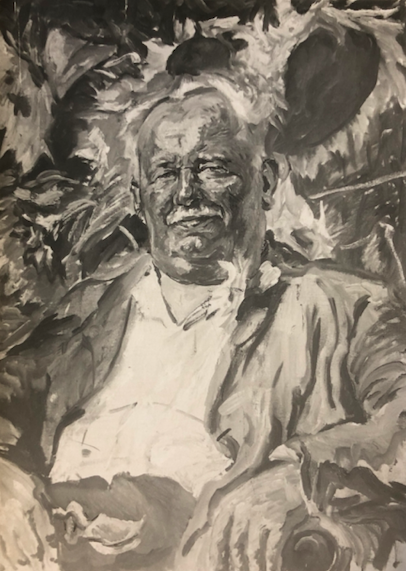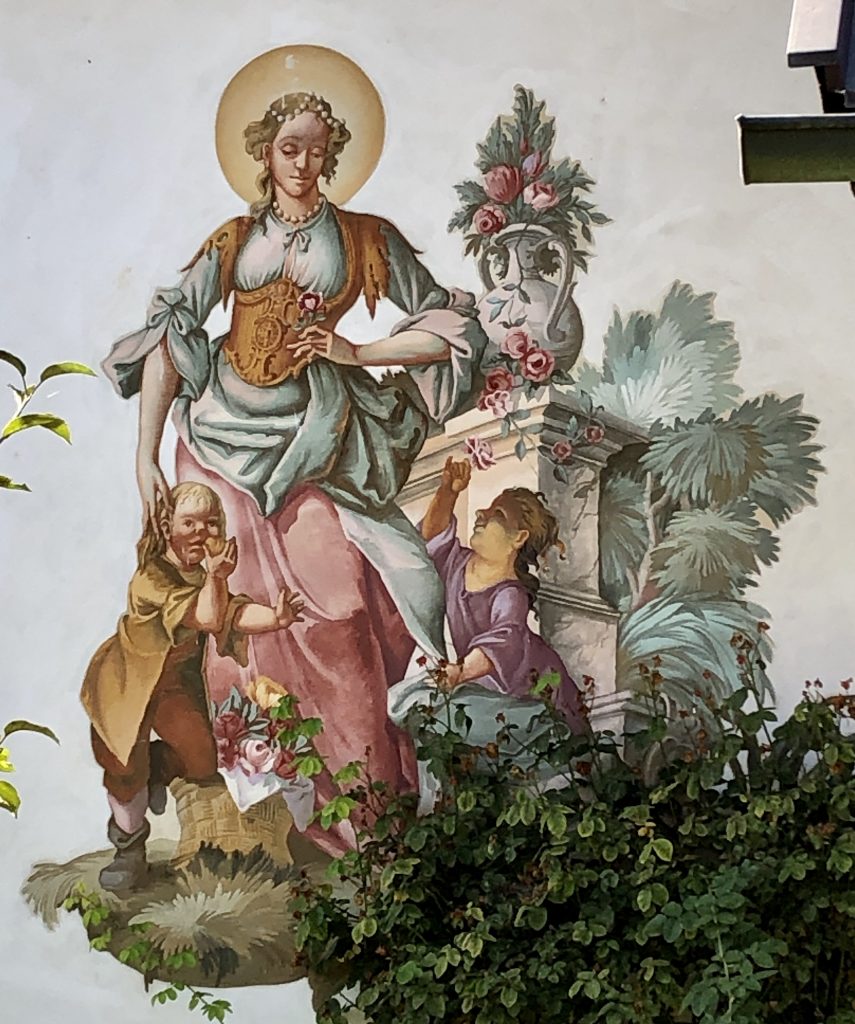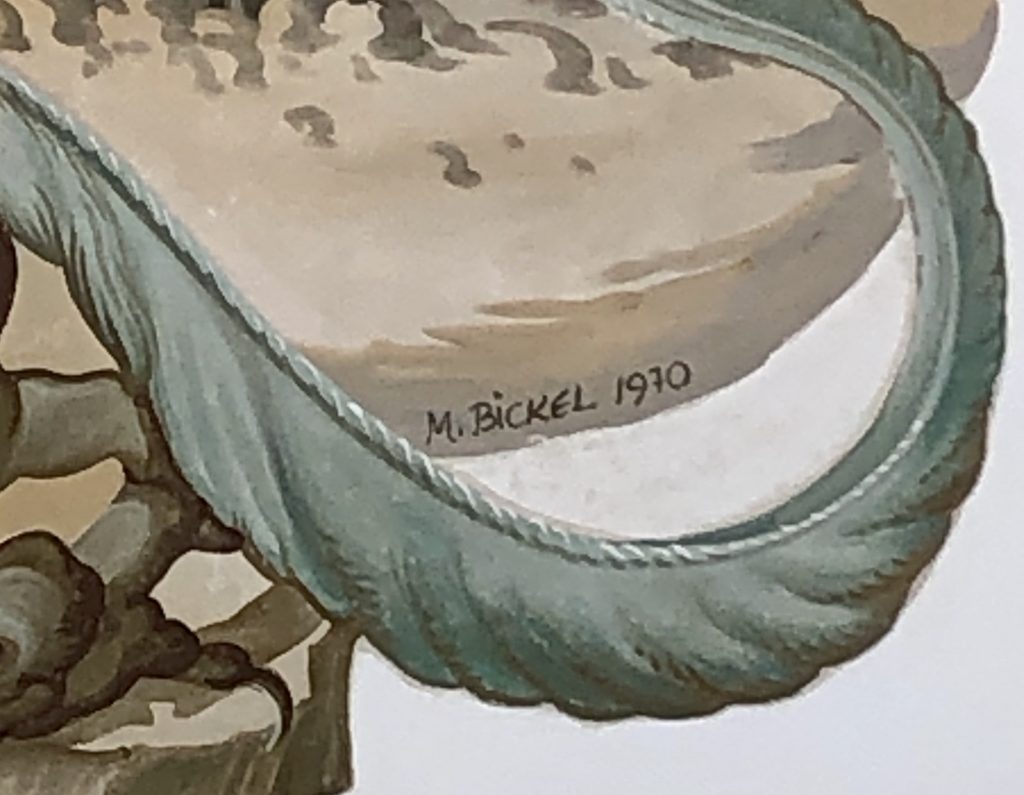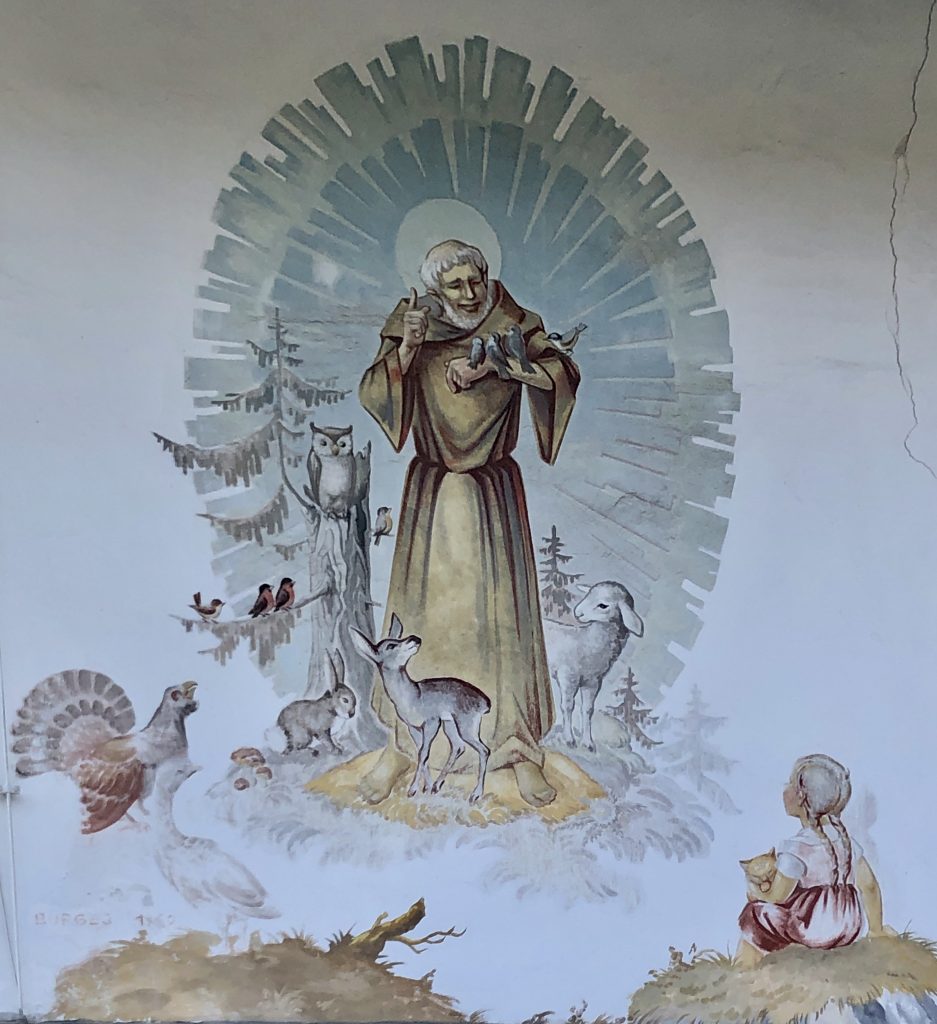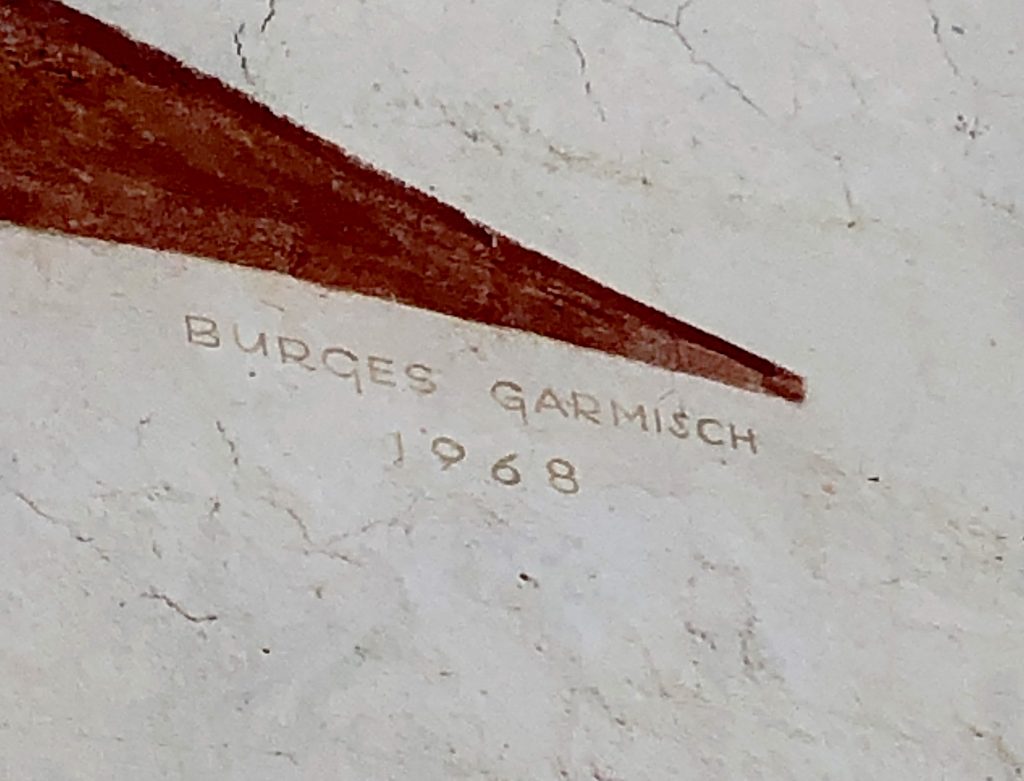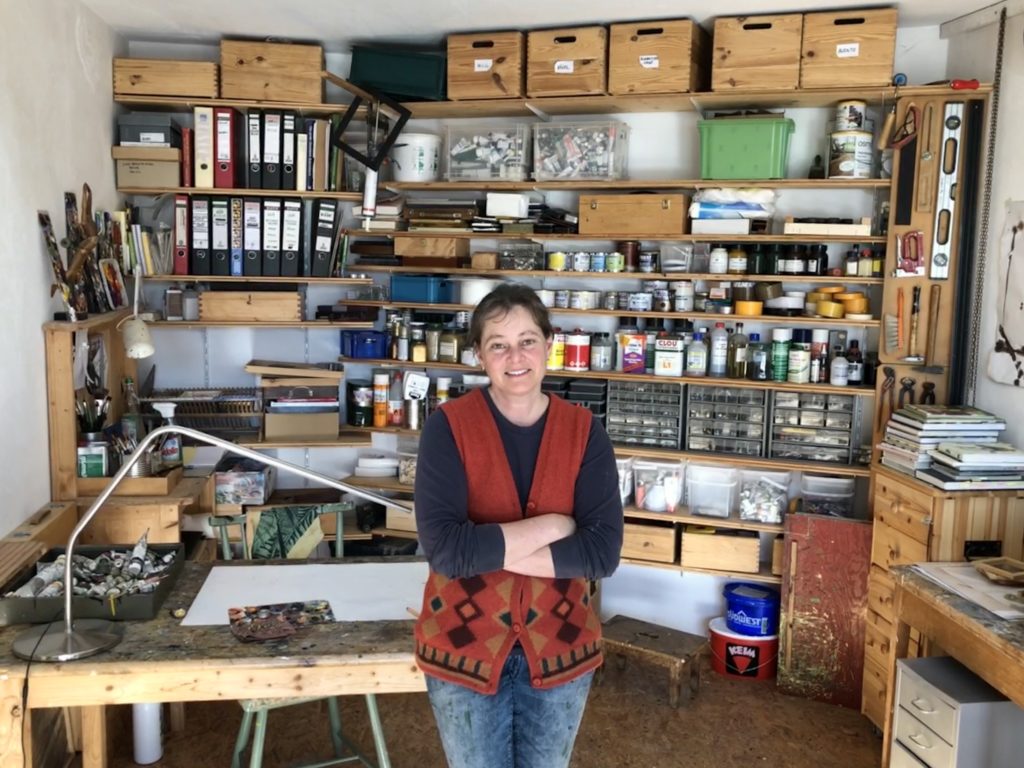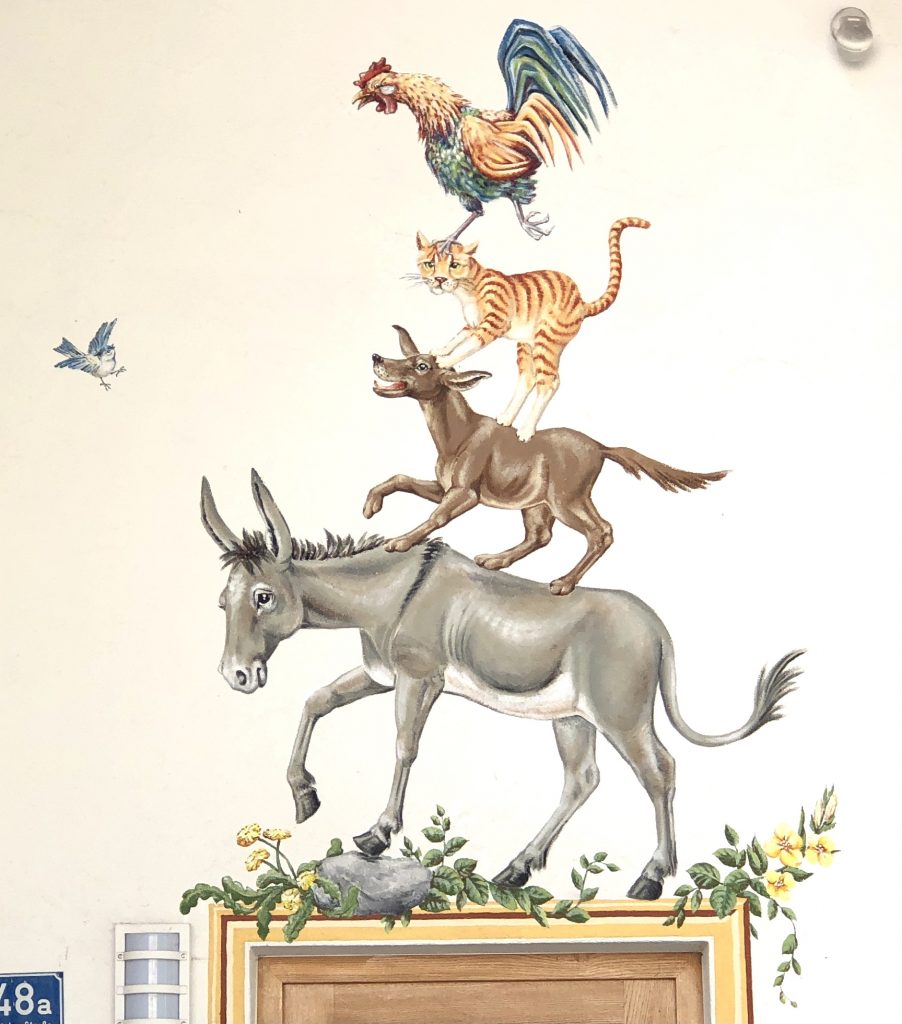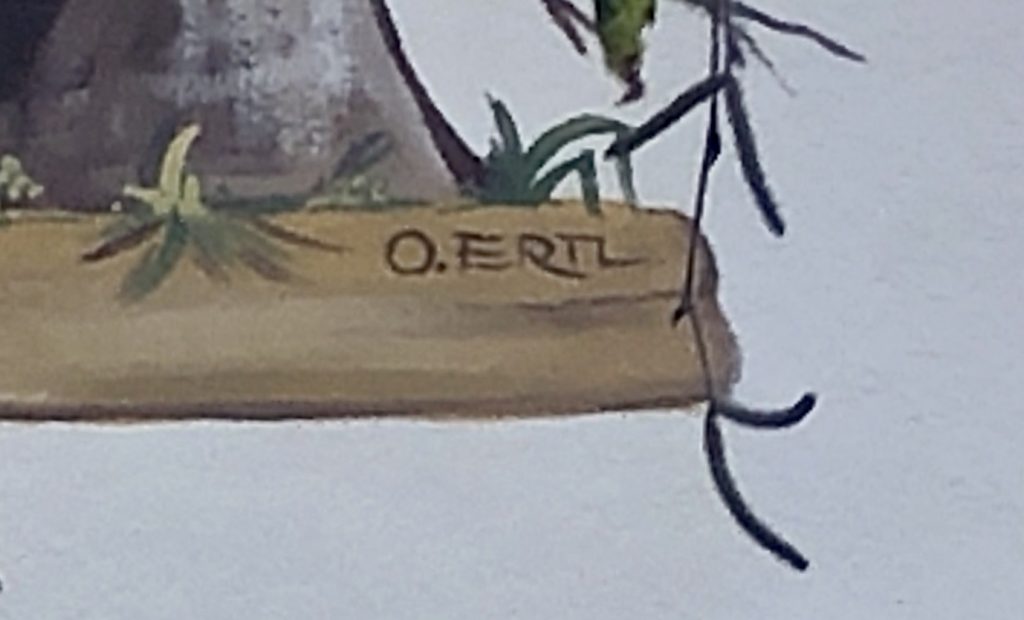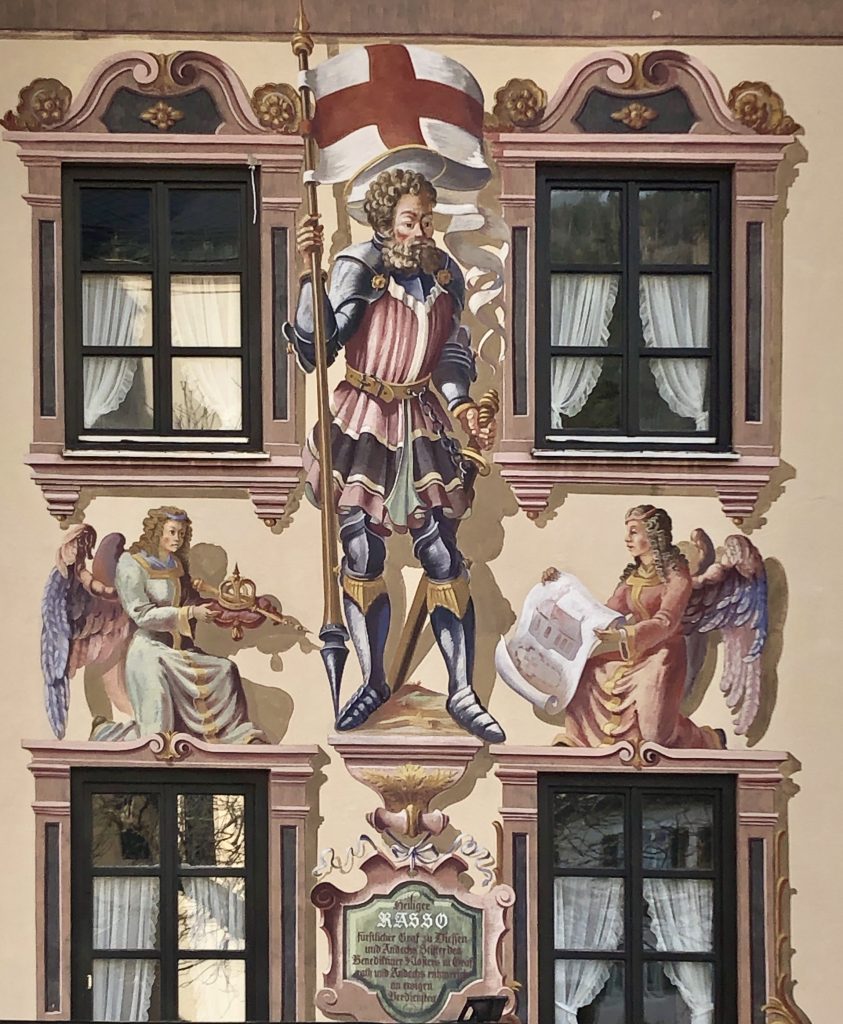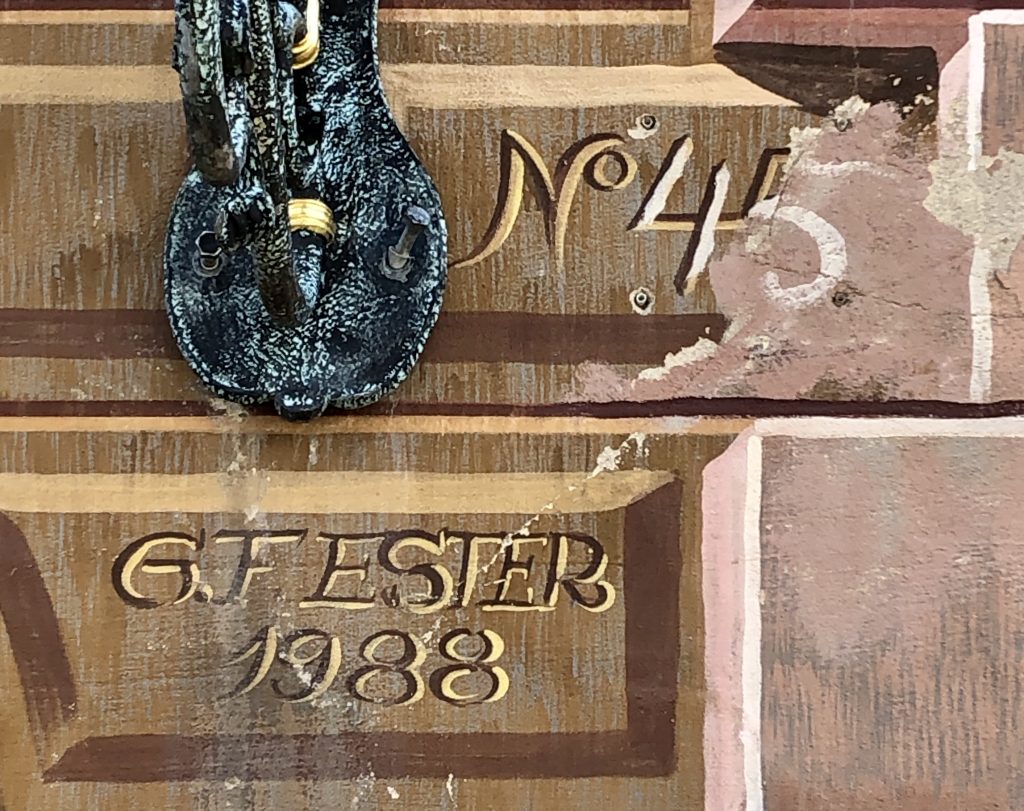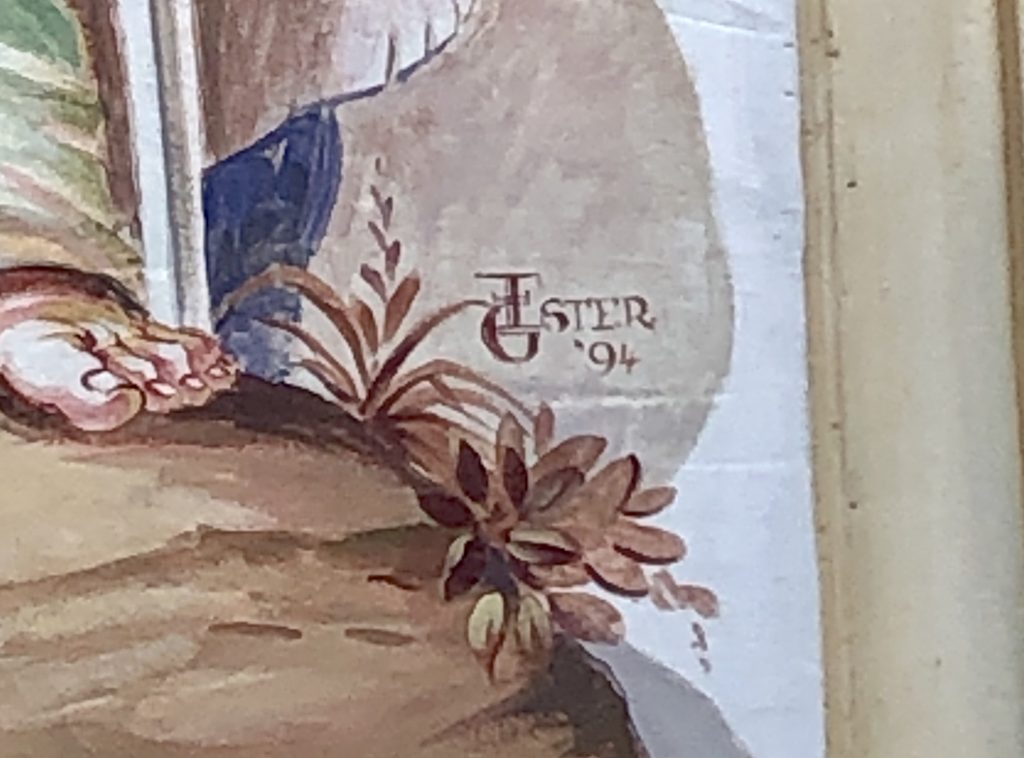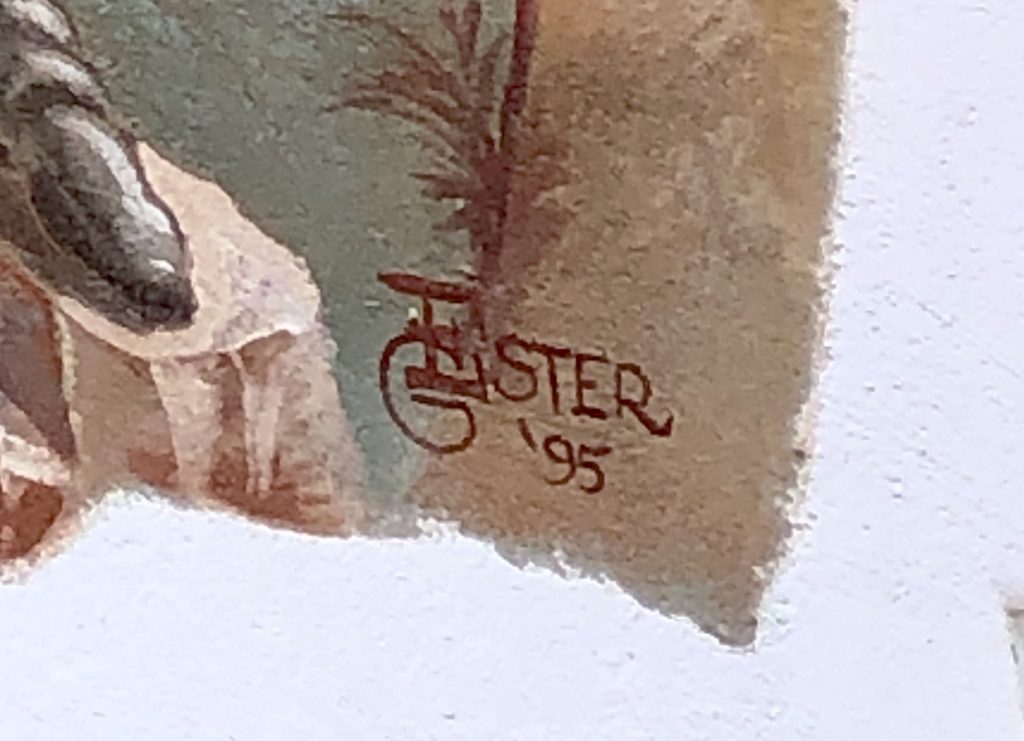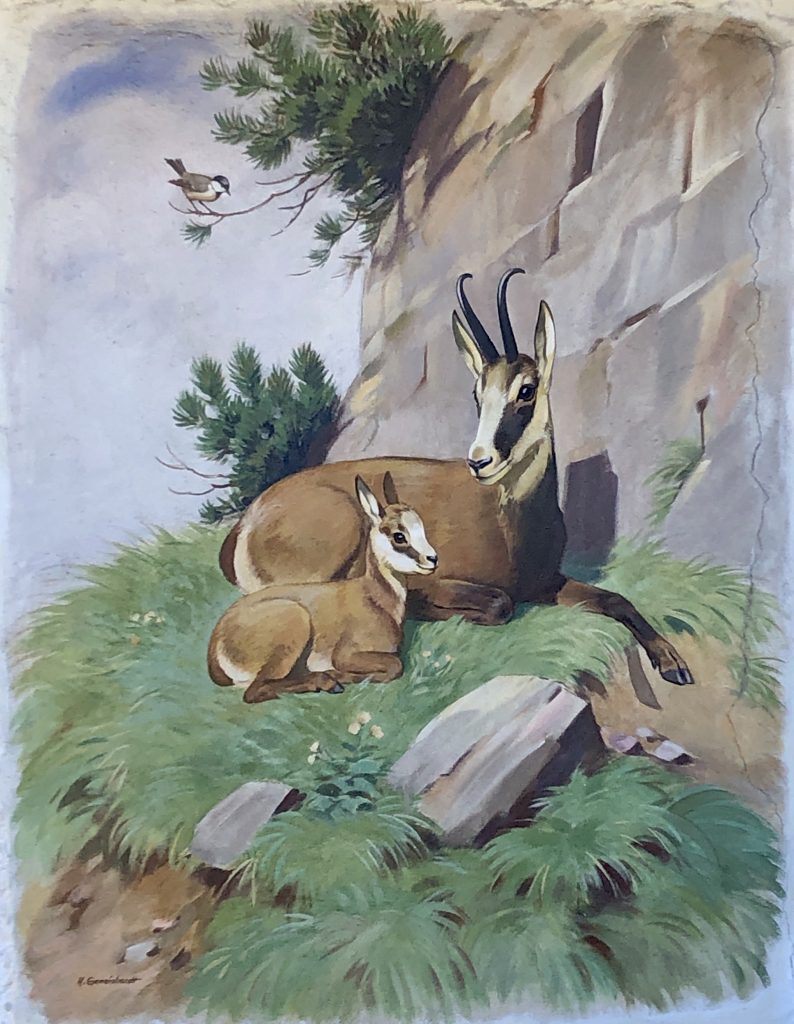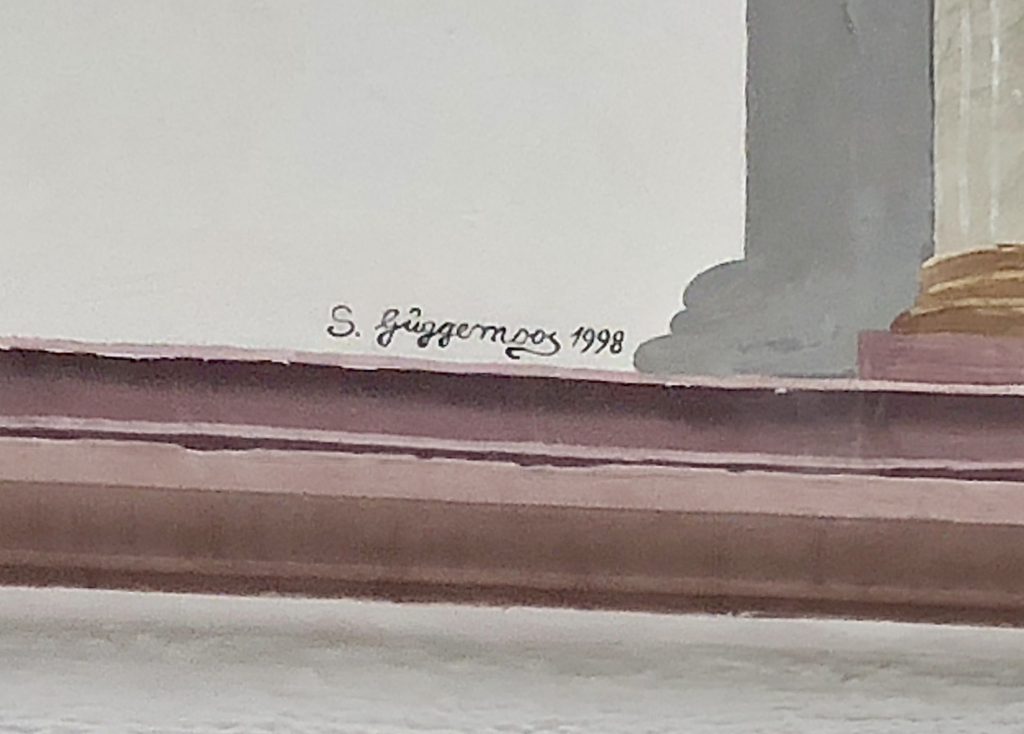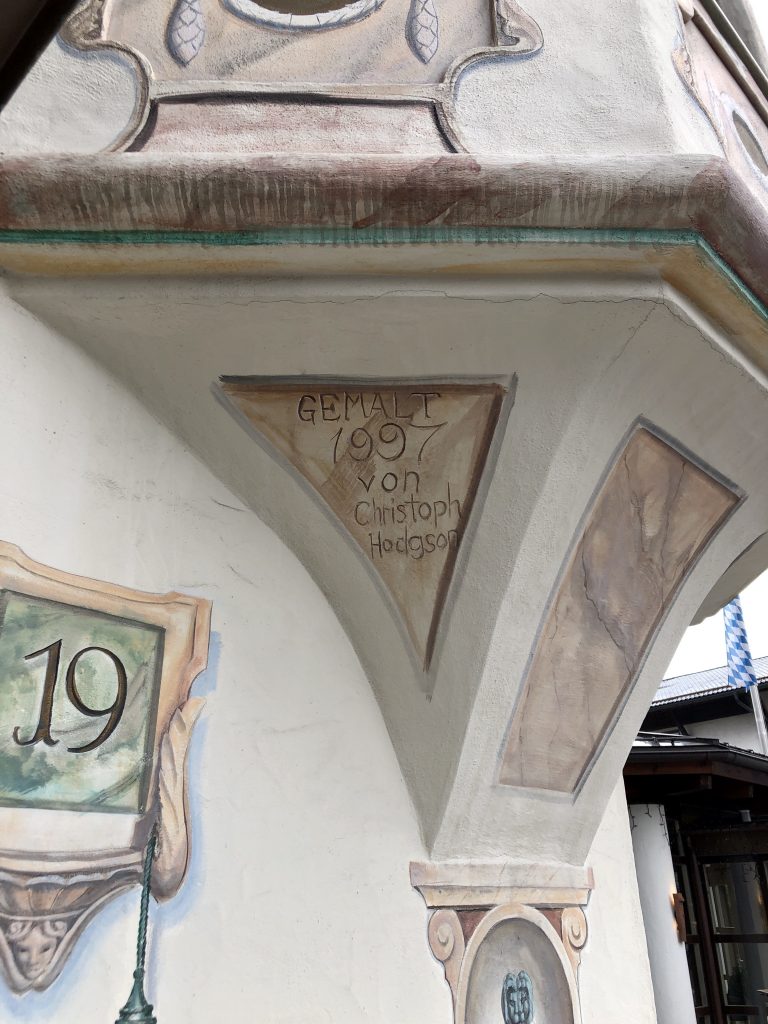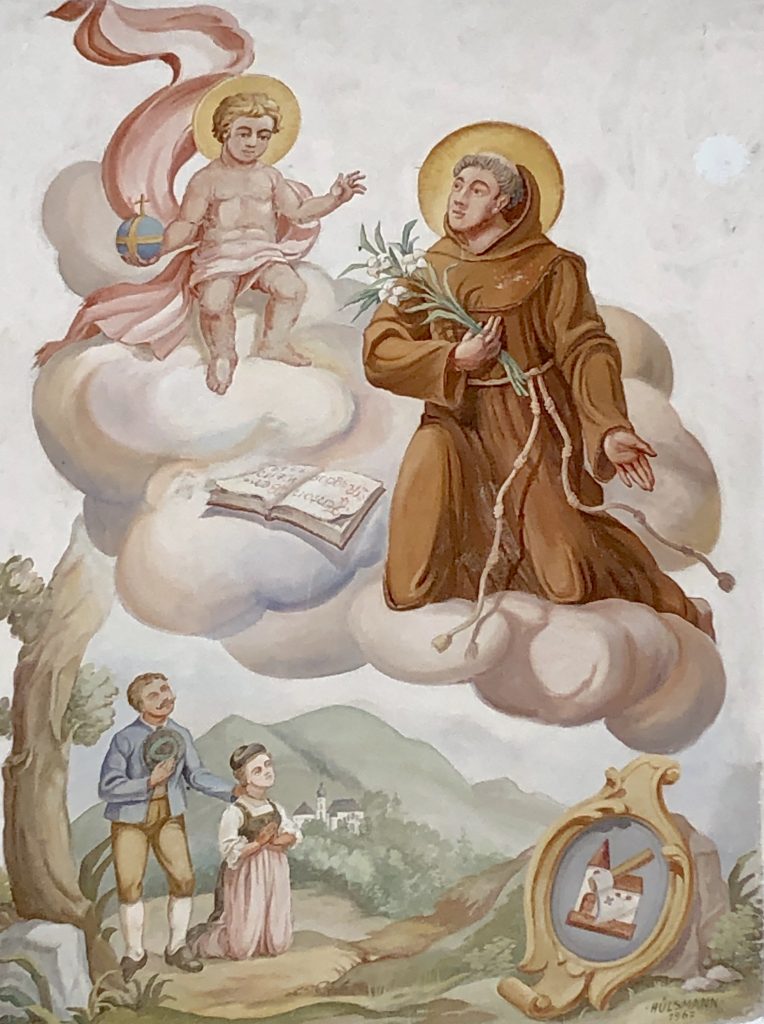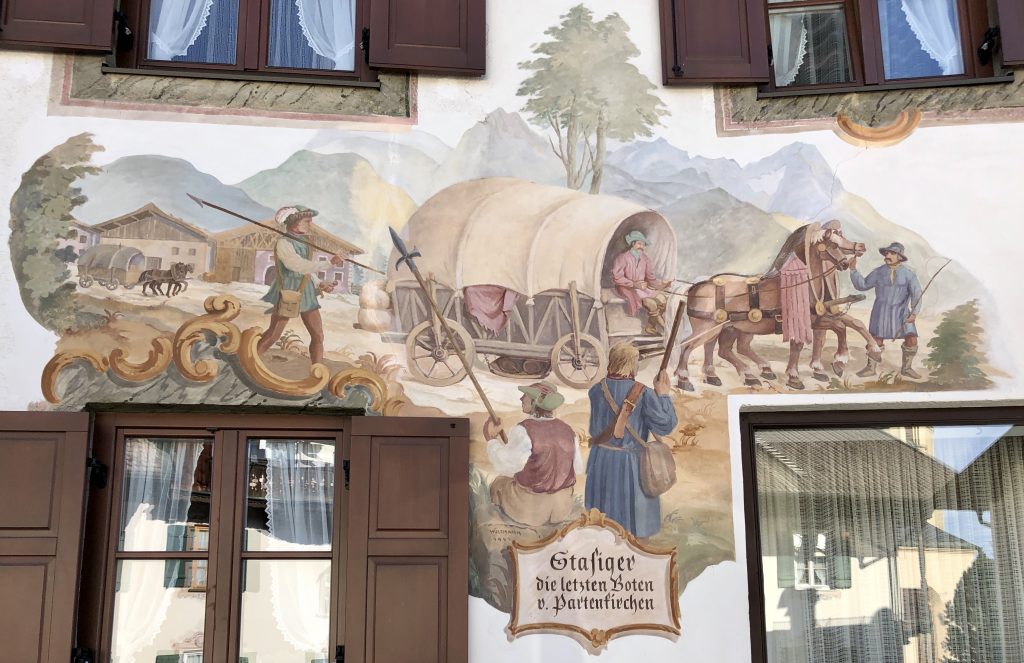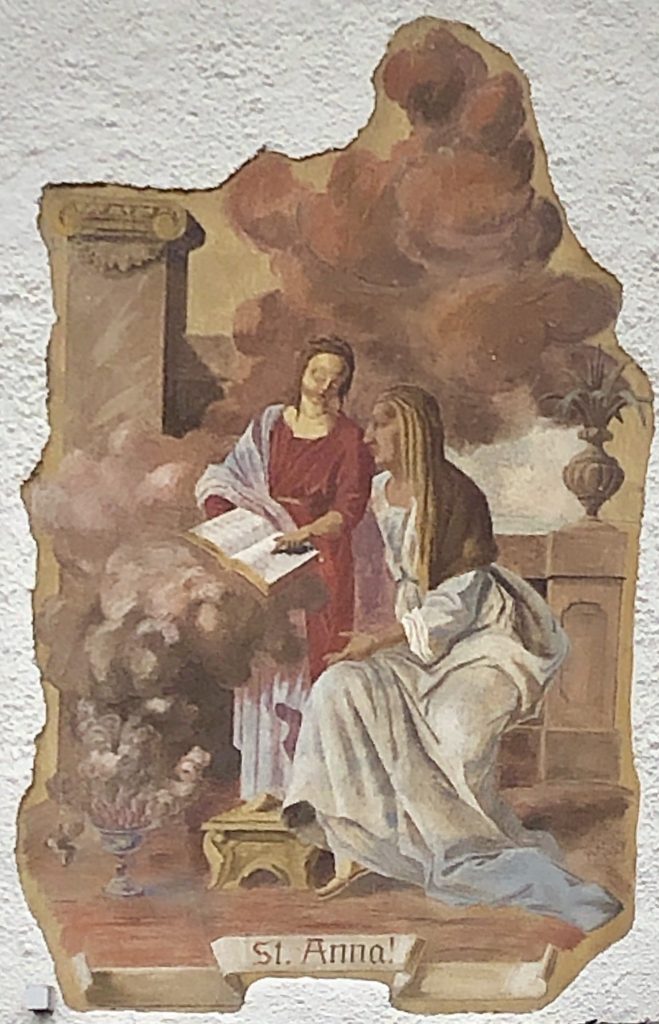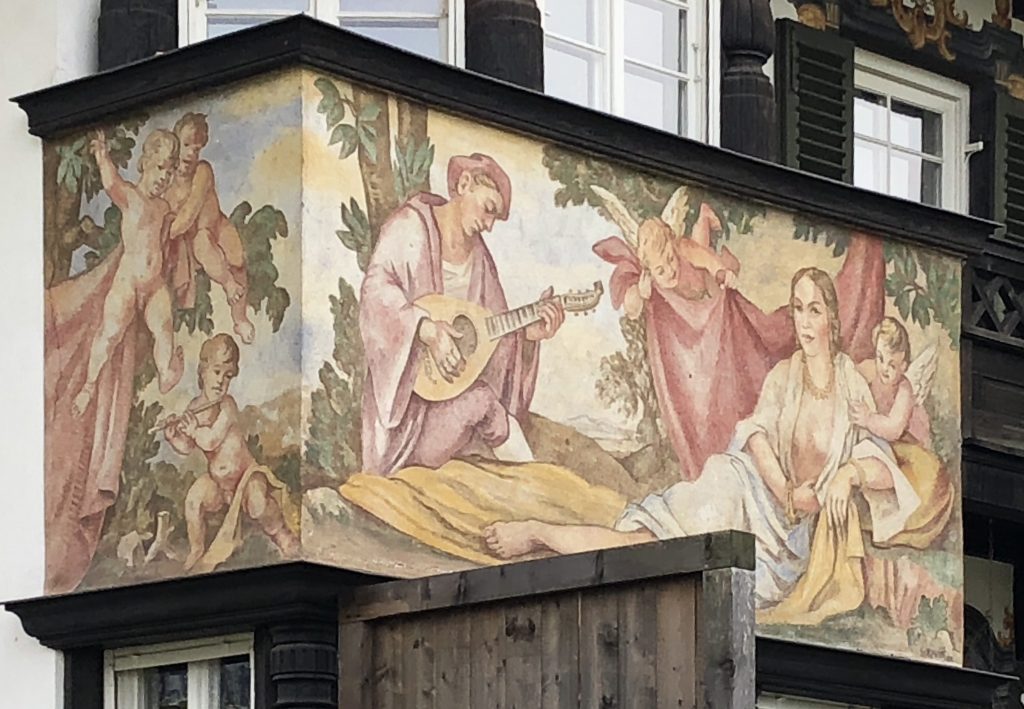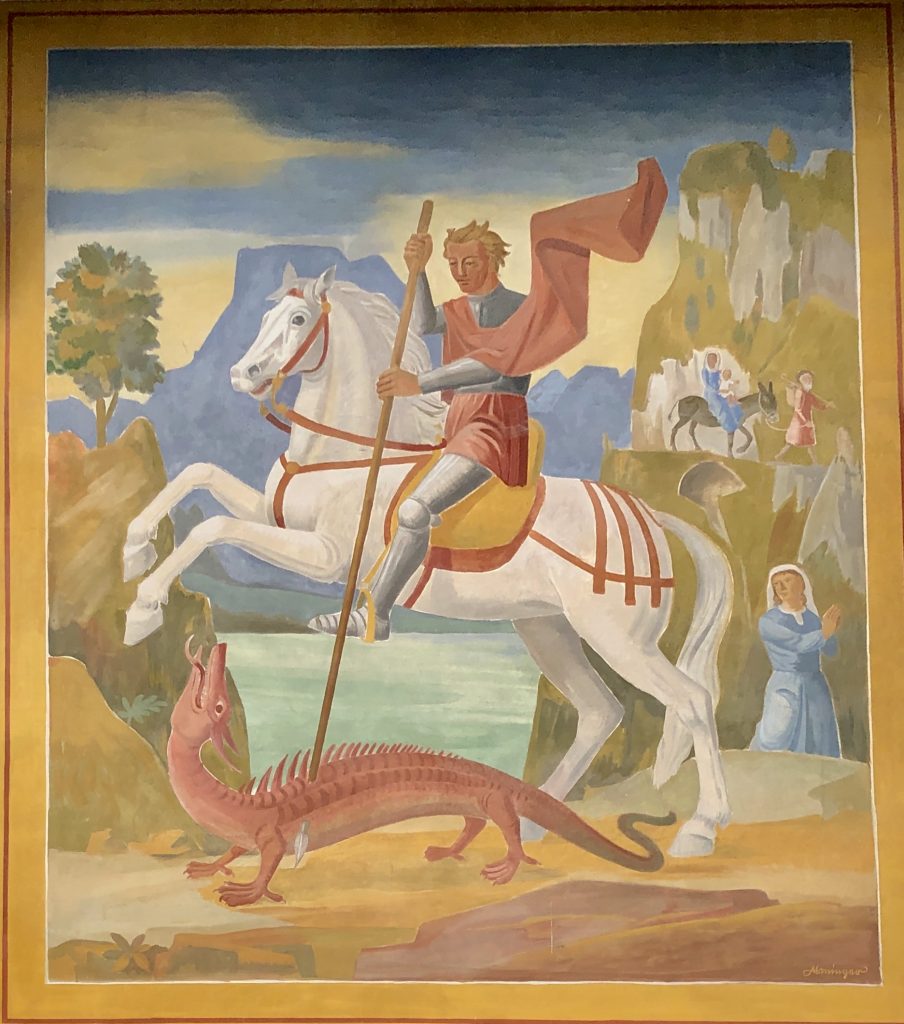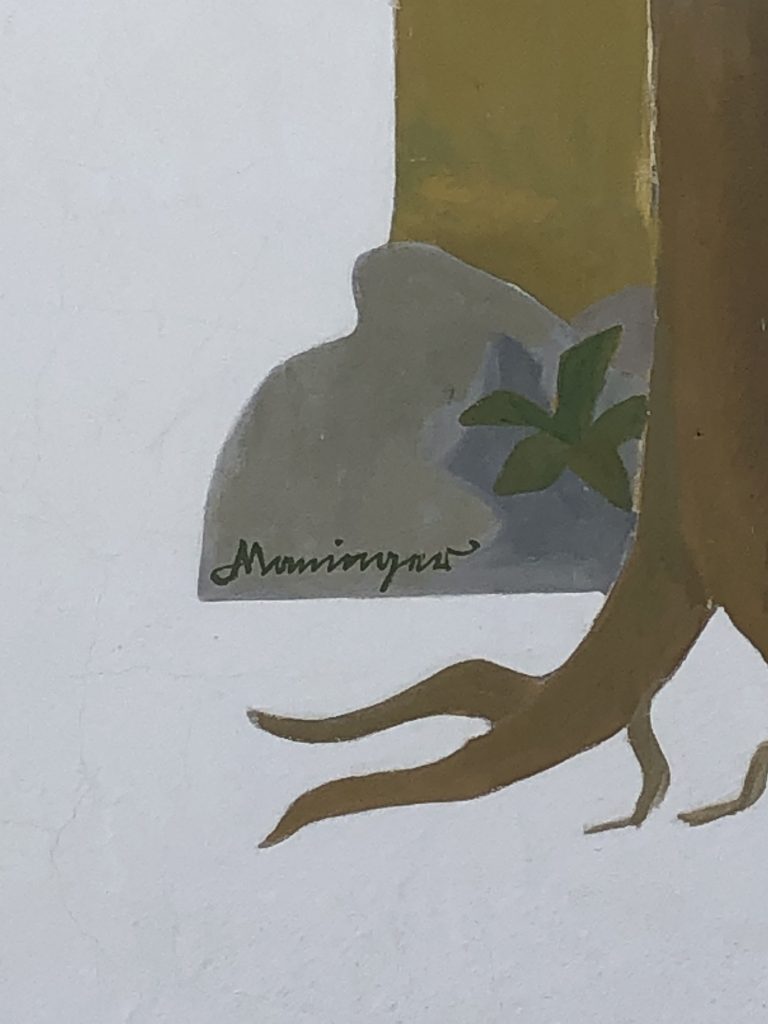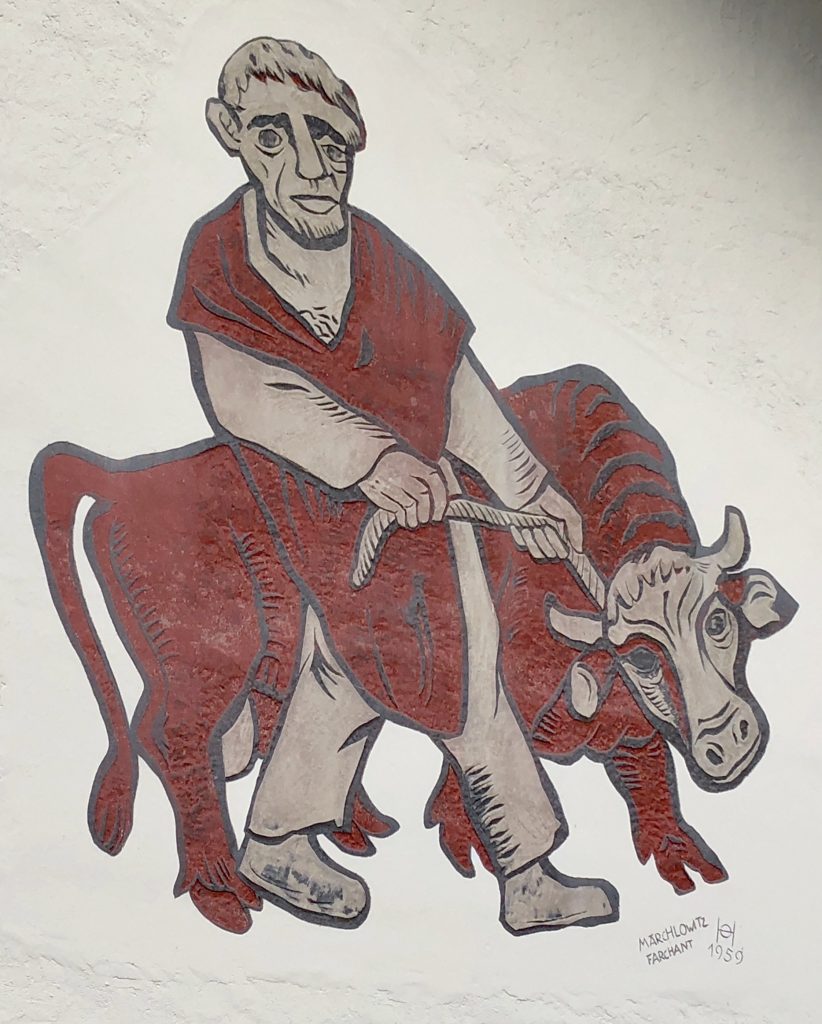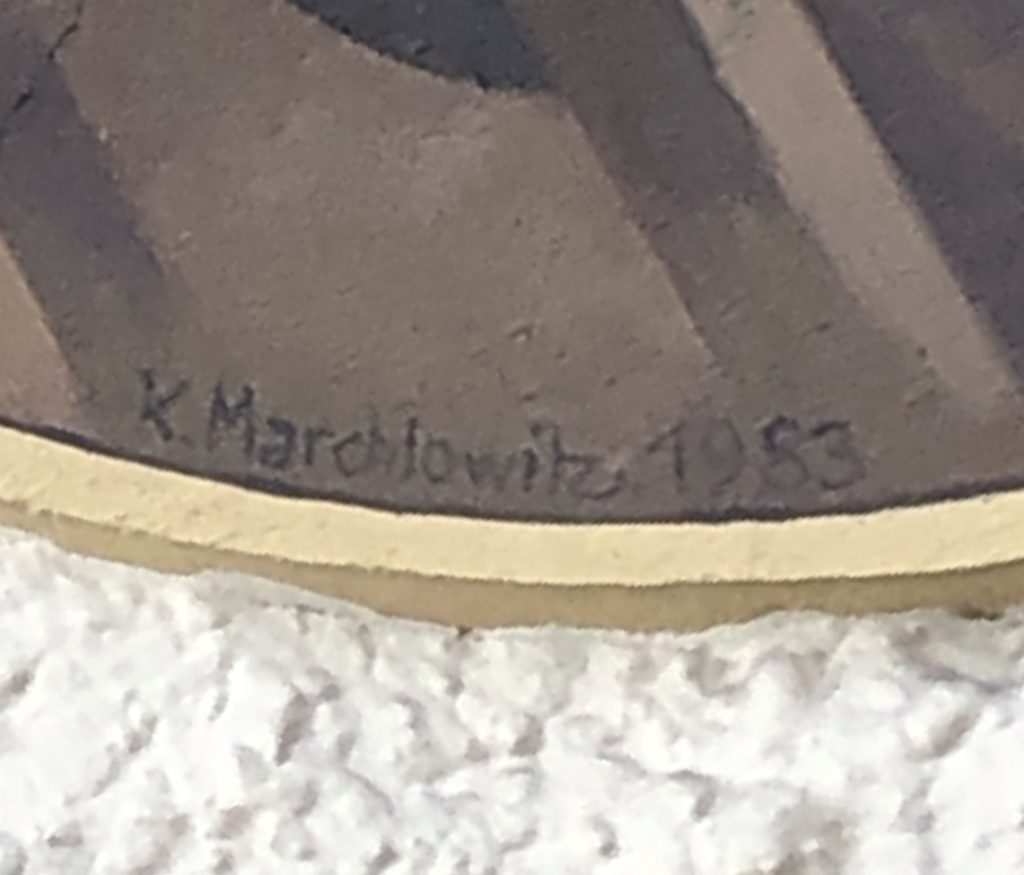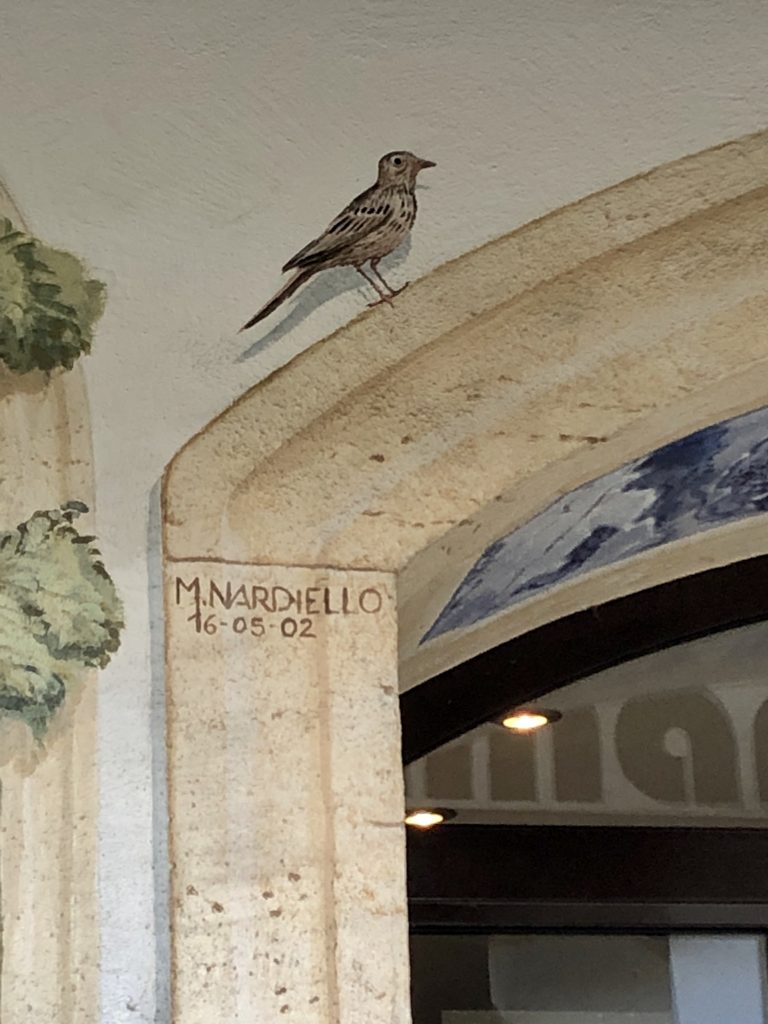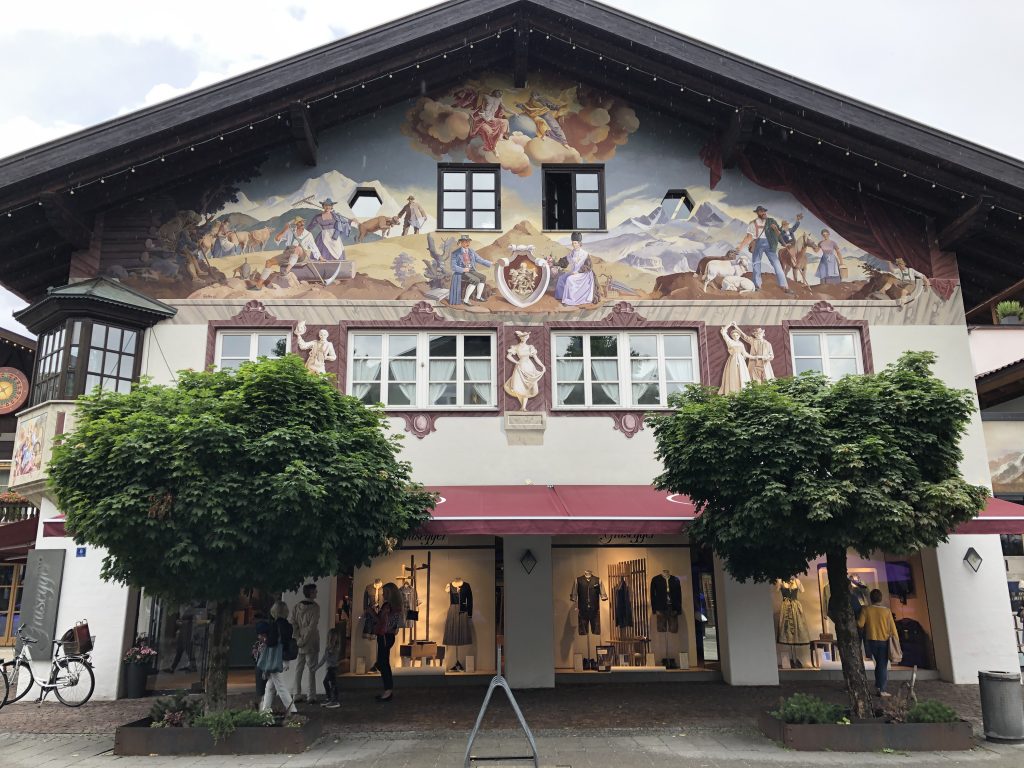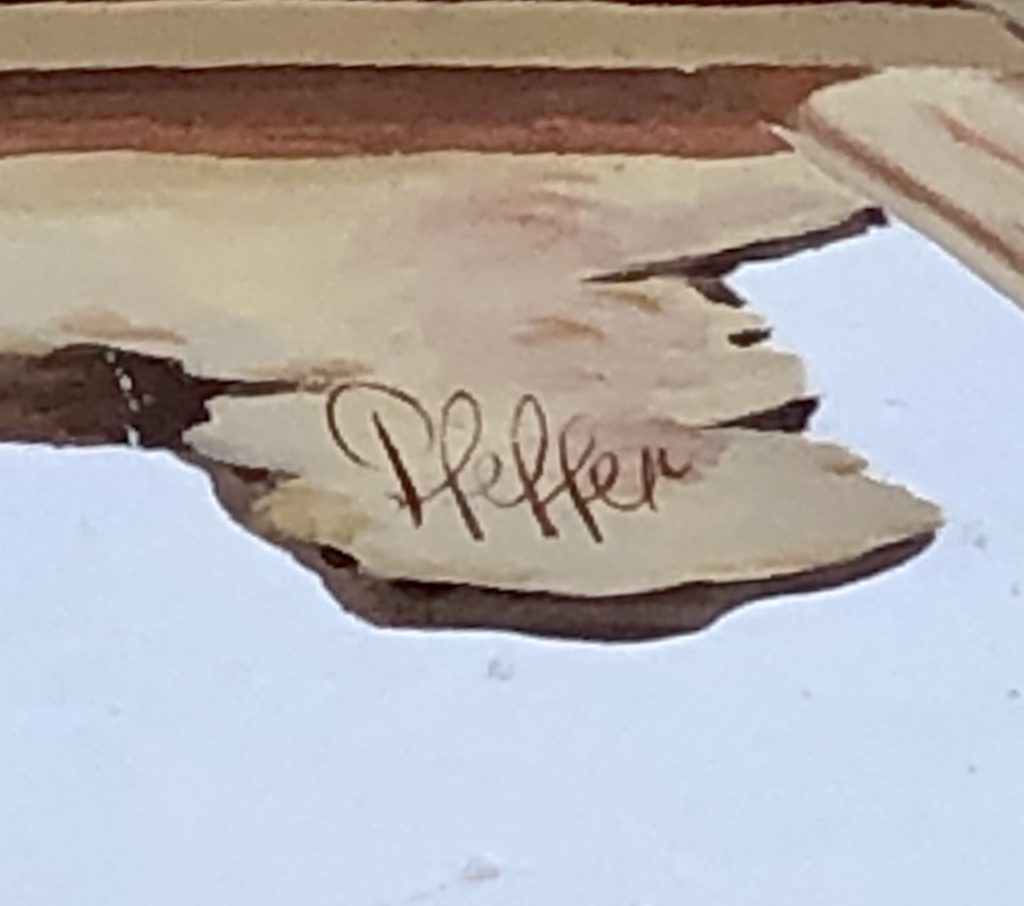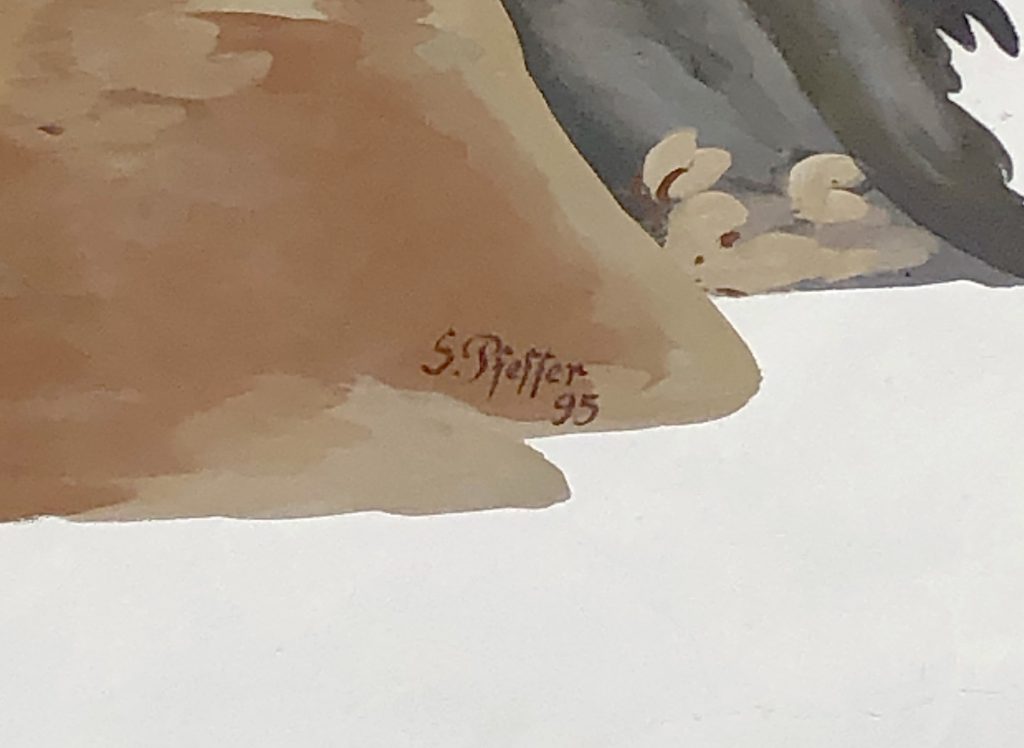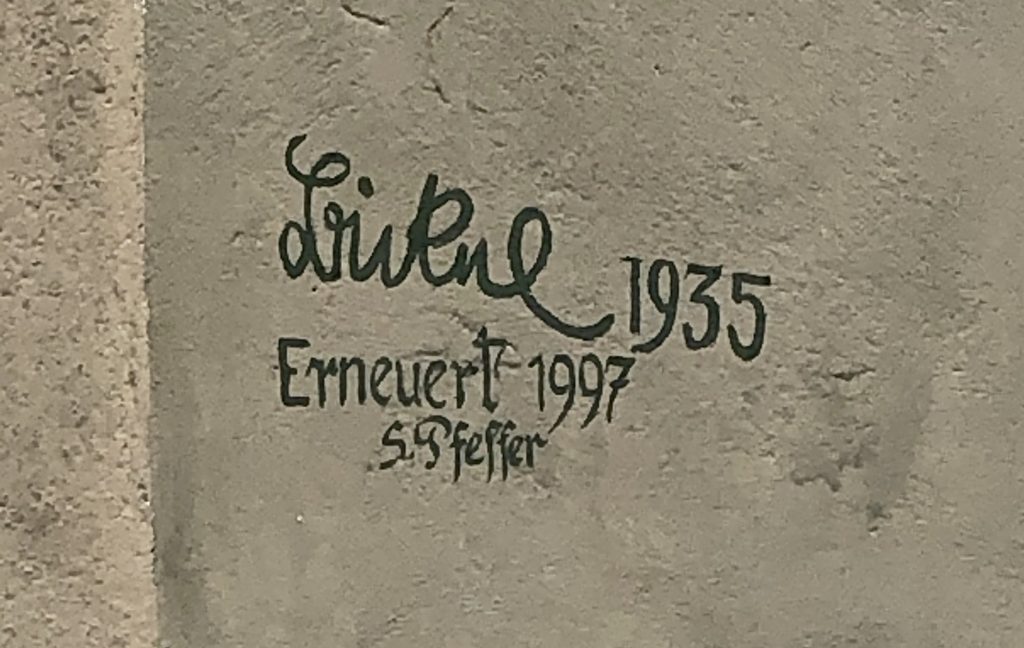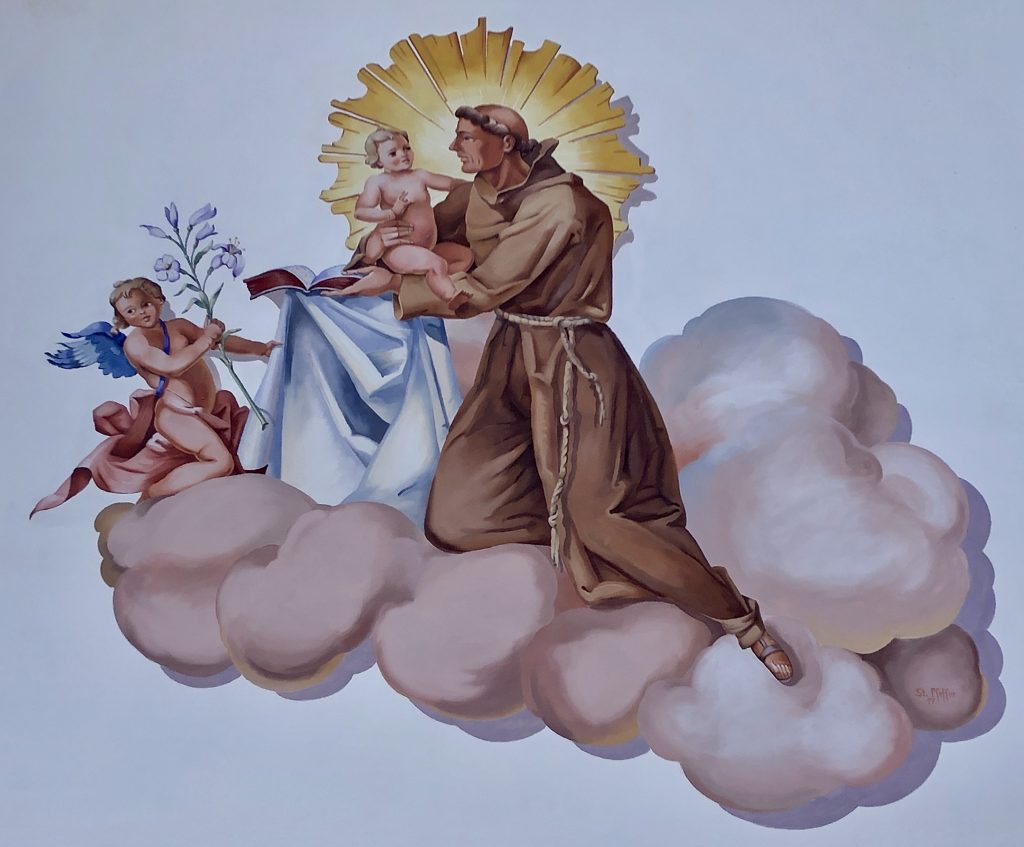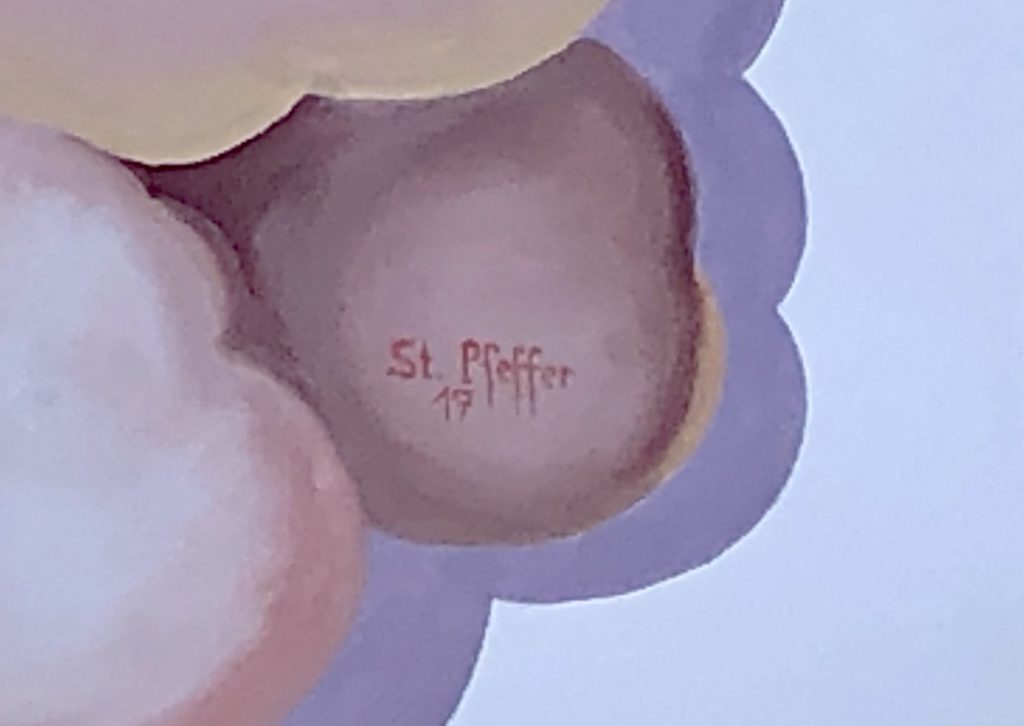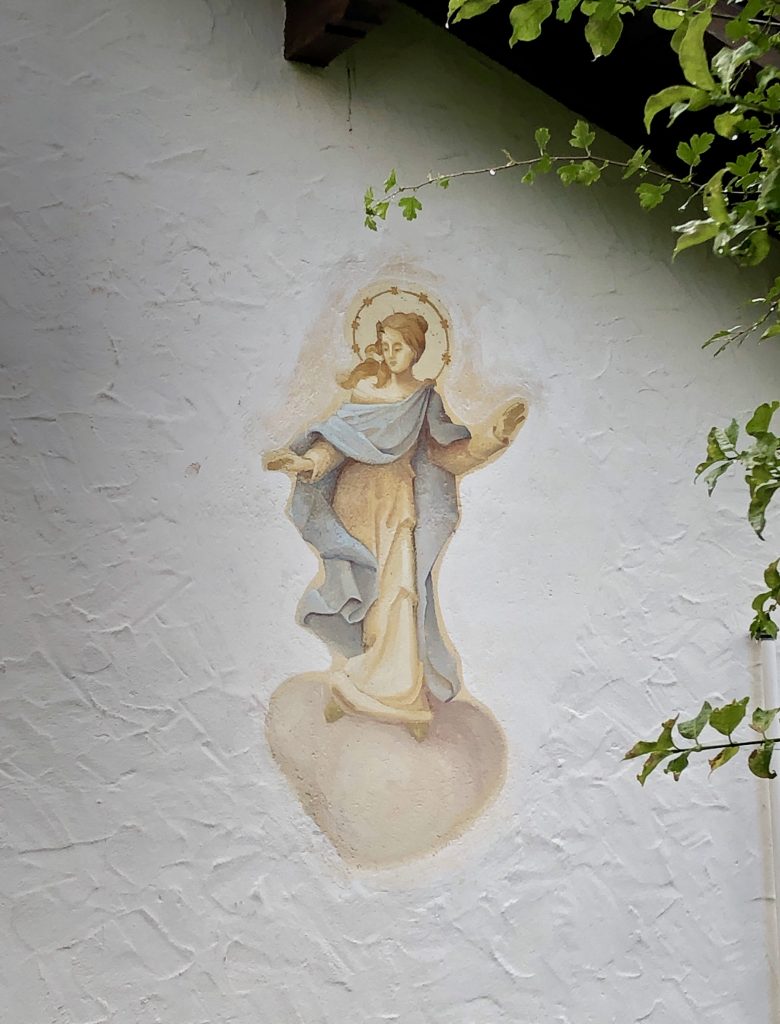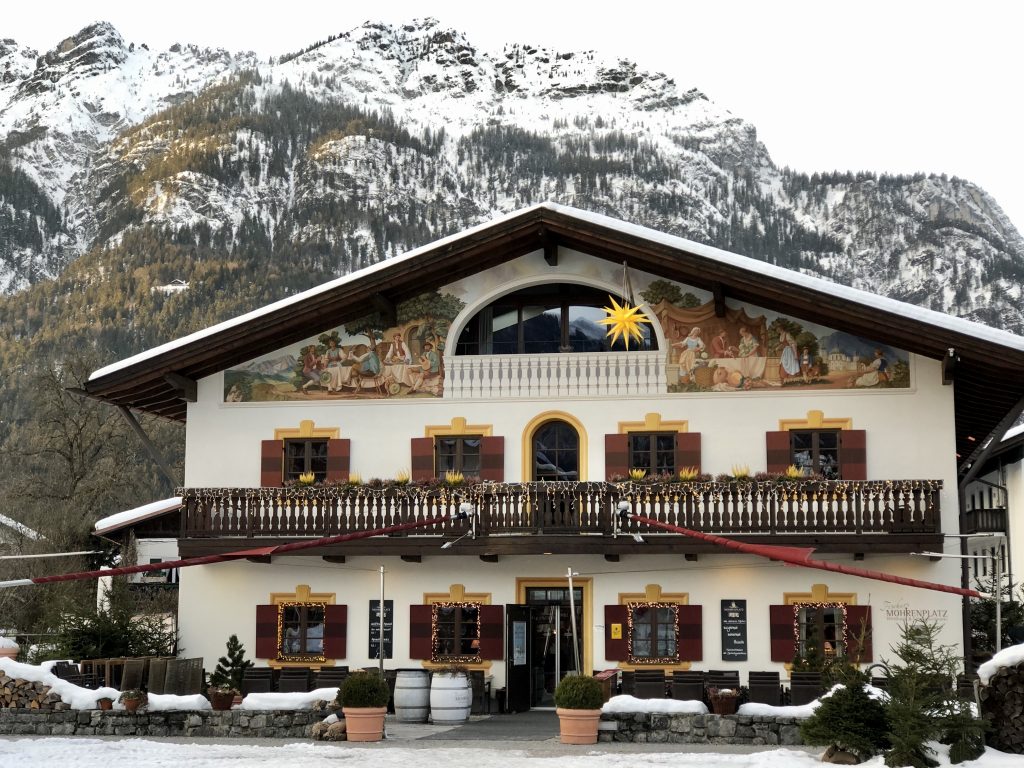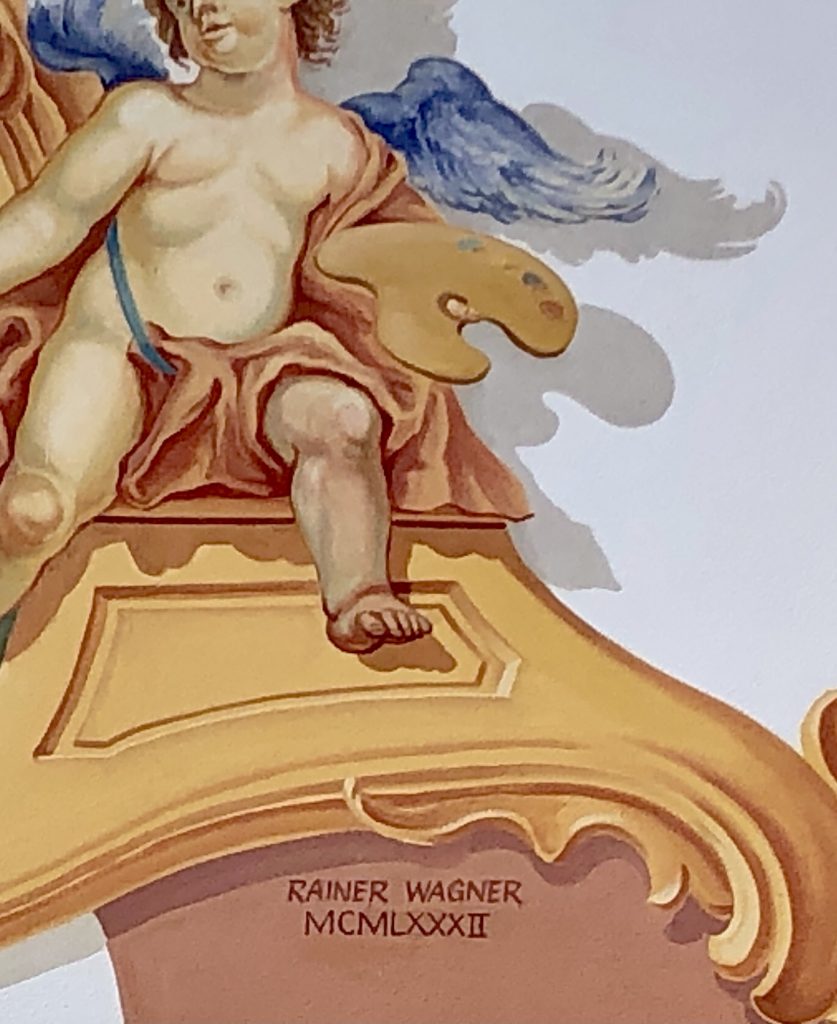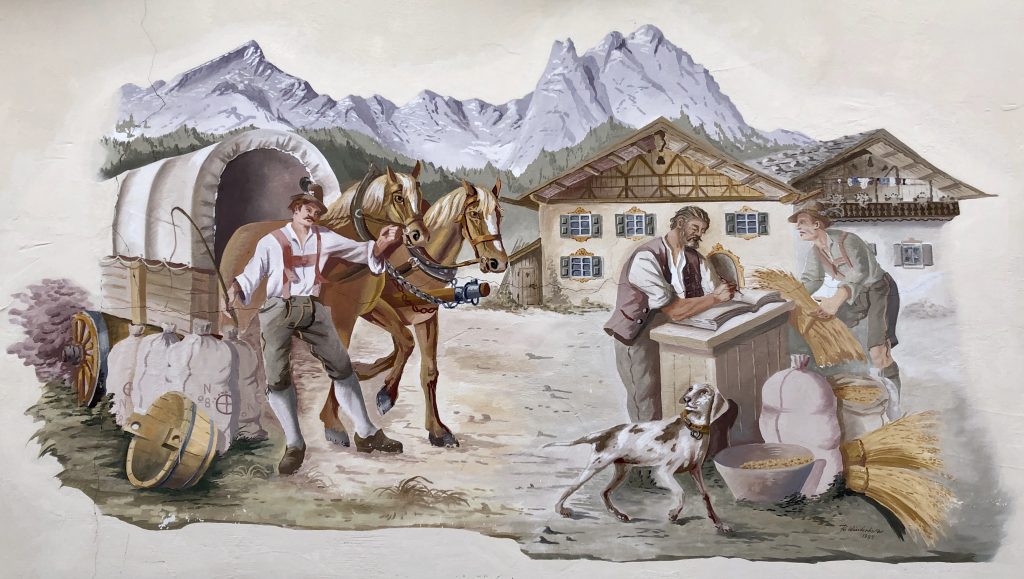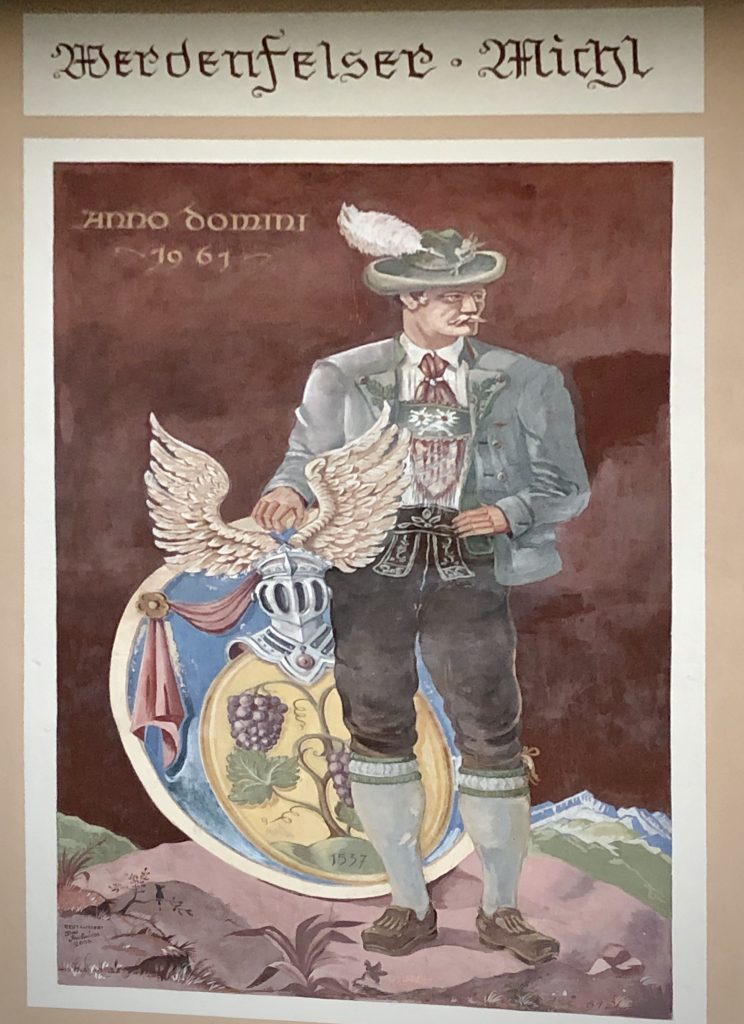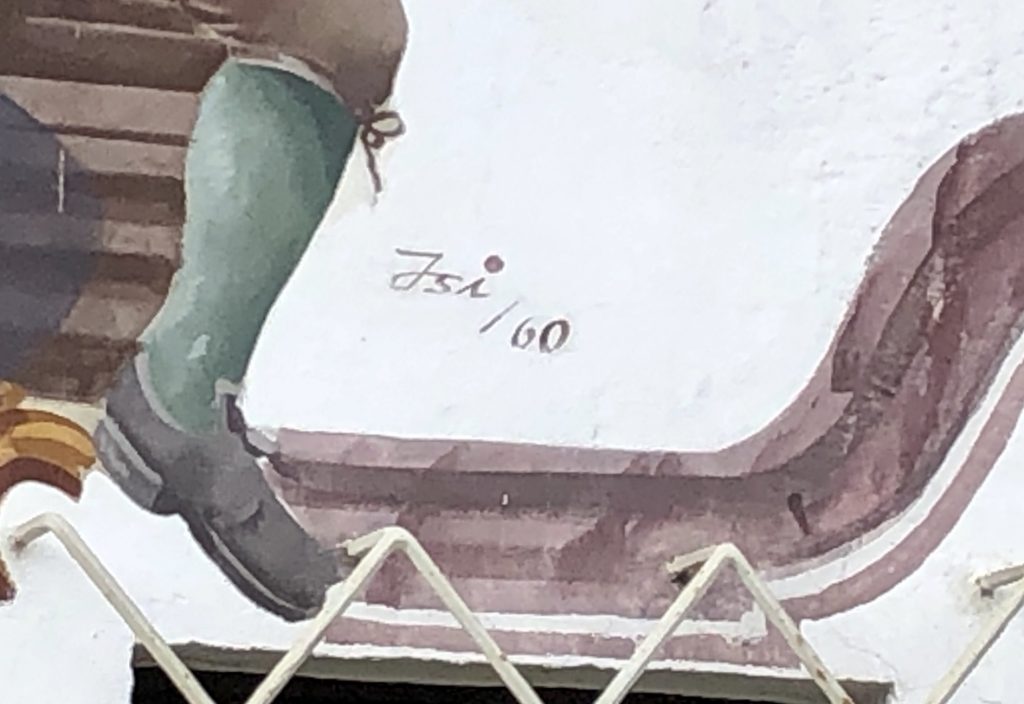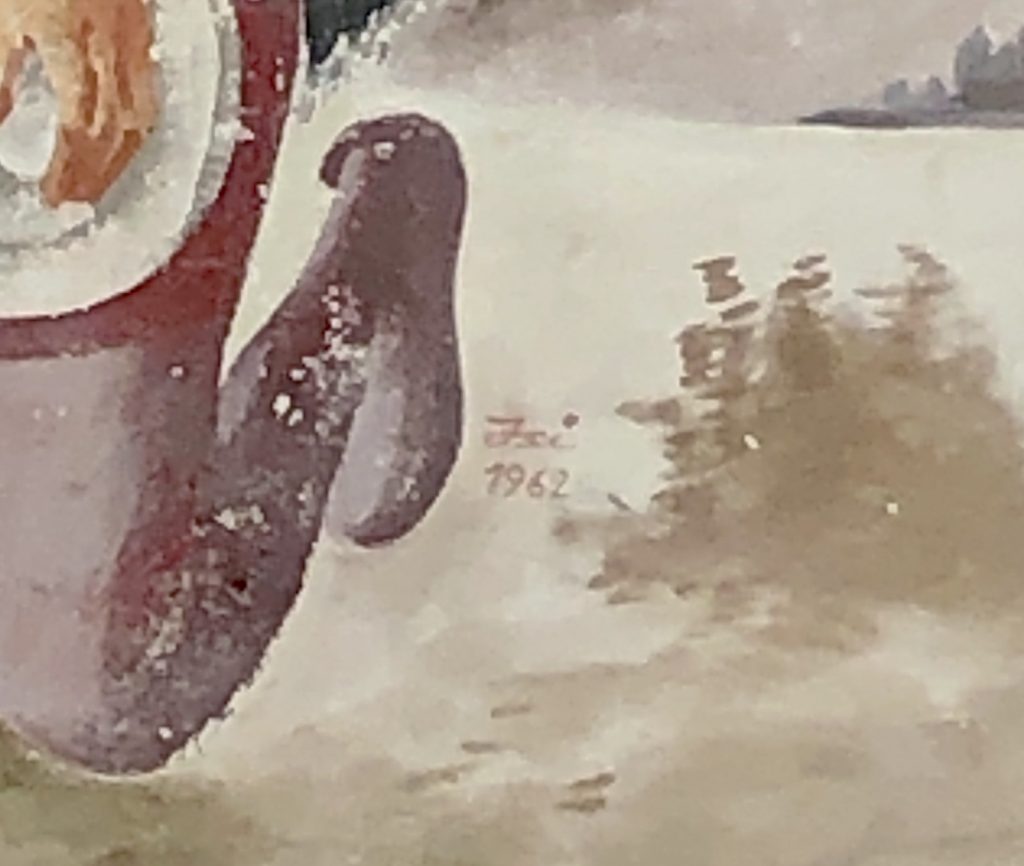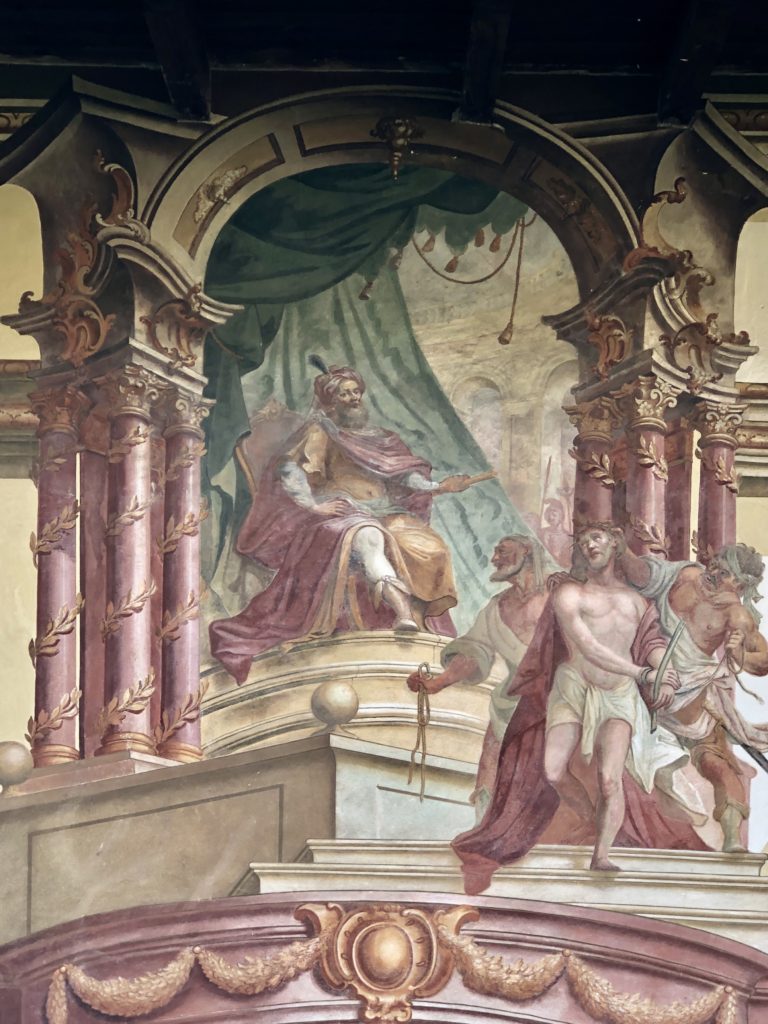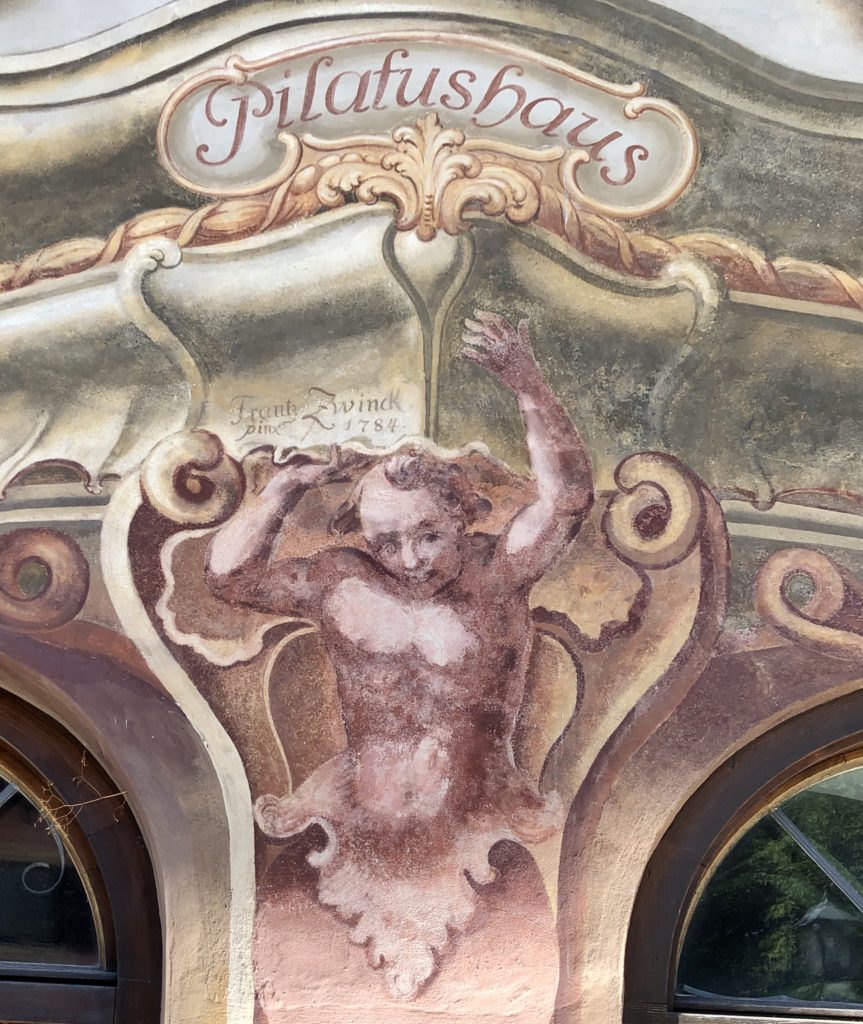- "Picture Houses," Time Magazine, August 25, 1952.
- "Opulent war nur die Phantasie: Ein Gespräch mit Moidele Bickel." Kostümbild: Lektionen 6, Theater der Zeit, 2016: "Ich habe die Schule vorzeitig abgebrochen, nicht mal Abitur gemacht. Eines Tages habe ich zu meinem Vater gesagt, diese Nonnen, die sind mir zu blöd, ich kann das nicht mehr aushalten. Da hat er gesagt: Musst du ja nicht, kommst du eben mit mir. Und dann bin ich mit ihm seine Aufträge erledigen gegangen. Er hat Hausfassaden und Deckenbilder gemalt."
- "Opulent war nur die Phantasie: Ein Gespräch mit Moidele Bickel." Kostümbild: Lektionen 6, Theater der Zeit, 2016: "Dann kommt diese Nähe zur Malerei vom Vater? Die kommt eindeutig von meinem Vater, aber auch aus dem Widerstand gegen ihn. Ich wollte es natürlich nicht so machen wie er. Ich wollte es ganz anders machen."
- "Opulent war nur die Phantasie: Ein Gespräch mit Moidele Bickel." Kostümbild: Lektionen 6, Theater der Zeit, 2016: "Dann durfte ich drei Semester Malerei studieren. Das war in den späten Fünfzigern. [...] Die Münchner Akademie. Ich hatte Glück, weil ich beim Oberberger war."
- "Opulent war nur die Phantasie: Ein Gespräch mit Moidele Bickel." Kostümbild: Lektionen 6, Theater der Zeit, 2016: "Das war in München. Da bin ich zum ersten Mal überhaupt ins Theater gegangen. Also richtiges Theater, nicht Peterchens Mondfahrt oder so. Da habe ich die Sachen von Kortner gesehen und mir gedacht: Das will ich auch haben. Ich habe mir überlegt, was ist am nächsten dran. Das war Bühnenbild, also bin ich in die Bühnenbildklasse in München an der Akademie, die von Professor Helmut Jürgens geleitet wurde. Er hat immer die Ausstattungen für die Opern von Orff gemacht, die ich hasste wie die Pest. Zu ihm bin ich gegangen und habe gefragt, ob er mich nimmt. Er hat zu den Mädchen, die er nicht wollte, immer gesagt: Werden Sie Krankenschwester, das ist besser. Und zu mir hat er gesagt: Gehen Sie zurück zu Ihrem Vater, da verdienen Sie wenigstens Geld."
- Meisenberger, Raimund. "Die Anfänge der Kostümbildnerin Moidele Bickel in Passau und Eggenfelden." Passauer Neue Presse (PNP.de), 20 May 2016, https://www.pnp.de/nachrichten/kultur/Die-Anfaenge-der-Kostuembildnerin-Moidele-Bickel-in-Passau-und-Eggenfelden-2080250.html. Accessed 5 Nov 2020: "Der Ursprung dieser Karriere liegt am Fürstbischöflichen Opernhaus Passau, wie Stadtheimatpflegerin Gisa Schäffer-Huber erklärt. Demnach kam Moidele Bickel mit ihrem Vater Heinrich Bickel − beide gelernte Maler und Restauratoren − in die Dreiflüssestadt zur Sanierung des Stadttheaters, die von 1959 bis 1961 vonstatten ging."
- "Opulent war nur die Phantasie: Ein Gespräch mit Moidele Bickel." Kostümbild: Lektionen 6, Theater der Zeit, 2016: "Dann sollte das klassizistische Opernhaus in Passau restauriert werden. […] Mein Vater hat diese Arbeit angenommen, weil es dort auch eine Decke gab, deren ursprüngliche Deckenmalerei aber verloren war. Zur gleichen Zeit, die Eröffnung des Theaters war schon ganz nahe, wurde dort Figaros Hochzeit geprobt. Ich bin zu dem Regisseur gegangen und habe ihn gefragt, ob ich nicht dableiben kann. Sie haben mich genommen. Da war ich dann plötzlich Bühnenbildner."
- Meisenberger, Raimund. "Die Anfänge der Kostümbildnerin Moidele Bickel in Passau und Eggenfelden." Passauer Neue Presse (PNP.de), 20 May 2016, https://www.pnp.de/nachrichten/kultur/Die-Anfaenge-der-Kostuembildnerin-Moidele-Bickel-in-Passau-und-Eggenfelden-2080250.html. Accessed 5 Nov 2020: "Moidele Bickel war zwischen 1964 und 1966 regelmäßig als Bühnenbildnerin in Passau und Landshut beschäftigt und hat in dieser Zeit unter anderem die Bühnenbilder zu ,Die Großherzogin von Gerolstein‘, ,Königskinder‘, ,Don Pasquale‘ und ,Der Menschenfeind‘ gemacht."
- "Opulent war nur die Phantasie: Ein Gespräch mit Moidele Bickel." Kostümbild: Lektionen 6, Theater der Zeit, 2016: "In Passau und Landshut habe ich ein Jahr lang Bühnenbilder gemalt, ungefähr dreizehn. Also so jeden Monat eins. [...] Es gab nichts anderes. Es waren Paravents, die musste man zusammenklappen, damit es in den Lastwagen passte. Sie haben ganz Niederbayern bespielt - in Wirtshäusern, in Kinos. Da man dort nur nachts arbeiten konnte, weil sie natürlich keinen Malsaal hatten, haben sie mir die Leinwände immer abends nach der Vorstellung auf die Bühne gelegt und ich habe nachts durchgemalt."
- "Opulent war nur die Phantasie: Ein Gespräch mit Moidele Bickel." Kostümbild: Lektionen 6, Theater der Zeit, 2016: "Ich kannte Peter Stein aus München, aus der sogenannten Studentenzeit. Da war er Regieassistent bei Kortner. Wir hatten im Studententheater etwas zusammen gemacht. Ich hörte von der Gründung der Schaubühne in Berlin. Ich bin hingefahren und habe gesagt: Ich will auch. Und Peter hat gesagt: Ja, warum eigentlich nicht?"
- "Berliner Kostümbildnerin Moidele Bickel gestorben." Berliner Morgenpost, 18 May 2016, http://www.morgenpost.de/kultur/article207575443/Berliner-Kostuembildnerin-Moidele-Bickel-gestorben.html. Accessed 5 Nov 2020: "1970 war die gebürtige Münchnerin nach Berlin gezogen, um an der Schaubühne 22 Jahre lang die Inszenierungen Peter Steins mit Kostümen auszustatten."
- "Moidele Bickel Biografie." filmportal.de, https://www.filmportal.de/person/moidele-bickel_cffa077886c1441fab105fa5f69e2202. Accessed 5 Nov 2020: "Ihre Kostümgestaltung bei Eric Rohmers "Die Marquise von O." (1976) bringt ihr einen British Academy Award (BAFTA) ein. 1994 und 1995 gewinnt sie in Frankreich zweimal in Folge den "César": 1994 für Claude Berris "Germinal", im Jahr darauf für Patrice Chéreaus "Die Bartholomäusnacht", für den sie auch für den Oscar nominiert wird."
- Lieber, Leah. "Re: Question about your costume design work under the pseudonym 'Bernadette Villard'". Message to the author. 5 November 2020. Email: Moidele Bickel "did NOT work on Germinal and did NOT won an award for this movie. The best about the truth is to see the credit of the movie itself and not through internet which is full of mistakes."
- Wörndle, Franz. “Re-4: Fwd: Re-2: Homepage Lüftmaler". Message to the author. 22 Sep 2020. E-mail: "Burges, Christa (Johanna); Malerin, Zeichnerin, Freskantin, Graphikerin, Linol- und Holzschneiderin, Porträts, Figürliches, Landschaften, Holzreliefs; *14.7.1924 Dresden – †19.3.1990 (Partenkirchen Klinikum, Grab in Garmisch); B. stammt aus einer Hugenottenfamilie; 1941-45 Studium an der Staatlichen Akademie der bildenden Künste in Dresden bei M.Claus (Graphik und Illustration), ab Oktober 1942 bei G.Siebert (Porträt und Tafelbild) und bei H.Hanner (Meisterschülerin, Komposition, Wand- und Tafelbild); 1942 und 1944 Akademiepreise; B. lebte seit März 1945 in Garmisch-Partenkirchen, zuletzt in Gar-misch, Fichtackerstraße 23; nachkriegsbedingte Tätigkeit im Kunsthandwerk (Spielzeugschnitzerei, Scherenschnitte), dann Werbegraphikerin; Gewinnerin von internationalen Wettbewerben für Entwürfe von Münzen, Medaillen und Plaketten; Buchillustrationen und Einbandentwürfe für Verlage; Studienreisen nach Frankreich und Italien; Mitglied des KBG; Gründerin des Kunst Seminars Werdenfels; „Großformatige Linolschnitte demonstrieren ihre graphische und illustrative Begabung, Farbreliefs lehnen sich an folkloristische Holzschnitzerei-en an, während ihre Porträtstudien fundierte akademische Schulung verraten.“ (GPT 1973, »R.Härtl); „Das pädagogische Geschick, das man aus ihren Worten heraushört, beweist die Künstlerin aber auch in ihren gut besuchten Kunsthandwerk- und Malkursen bei der hiesigen vhs. Dort versteht es Christa Burges, mit viel Einfühlung in ihren Schützlingen verborgene künstlerische Begabungen zu wecken und ihnen so zu einem sinnerfüllten Leben zu verhelfen. Aber dazu ge-hört Handwerk. So müssen die Schüler in oft mühsamer Arbeit die Techniken der Farbzubereitung und -mischung, der Grundierung und des Vergoldens, des Gipsschneidens und Schnitzens lernen, um ihre Ikonen und Hinterglasbilder sauber und materialgerecht gestalten zu können. ... Ihren Mal- und Zeichenkurs bezeichnet die Künstlerin ›als Schule des Sehens‹. Diese Erziehung zum richti-gen Sehen, zum ›Handwerk mit den Augen‹, wie es die Malerin selbst nennt, geschieht durch das Zeichnen vor dem Motiv selbst: Licht- und Schattenwirkungen werden ebenso genau studiert wie Linie und Form des Objekts. Dabei be-treibt Christa Burges ›eine Art Pädagogik durch das Hintertürchen‹: Je nach individueller Veranlagung und Begabung werden die Schüler behutsam gelenkt oder durch konstruktive Kritik auch mal bewußt ›geschockt‹.“ (GPT 1974, »R.Härtl); „Durch ihre Lehrtätigkeit an der Volkshochschule und ihr anstecken-des Temperament hat sie viele Menschen für die Kunst geöffnet und zu kreativer Freizeitgestaltung motiviert. Die gebürtige Dresdnerin studierte dort an der Staatlichen Akademie der bildenden Künste und legte 1945 das Staatsexamen ab. Lange Jahre war sie bei Verlagen für die Illustrationen in Kinder- und Jugendbücher zuständig, entwarf Münzen und Medaillen sowie Kinderspielzeug. 43 Jahre war sie zugleich freischaffende Malerin und Grafikerin. Ein Bild in der Turnhalle der Gröbenschule stammt von ihr, sie malte Fresken im Kloster Schouls-Tarasp und an hiesigen Häusern, organisierte Ausstellungen. Seit 1967 war sie an der vhs als (dienstälteste) Kursleiterin tätig (Aktmalen, Aquarelle, Bauern- und Hinterglasmalerei). 1985 übernahm sie den ›Werdenfelser Künstlerbund‹, der 1986 in ›Werdenfelser Künstlergilde‹ umgetauft wurde.“ (GPT 1990); Ausstellungen: 1969/83 Arnsberg Sauerland-Museum, Dresden, München Haus der Kunst; Garmisch-Partenkirchen, 1996, zuletzt 2002, Gedächtnisausstellung; Werke, Fresken: Garmisch: 1955, Alpspitzwellenbad „Garmisch-Partenkirchen im Jahreslauf“; 1966, Frühlingstraße 16 „Hubertuslegende“; 1969, Loisachstraße 29 „Vogelpredigt des hl.Franziskus“; 1969, Brauhausstraße 7, kath. Kindergarten St. Martin „Die 4 Jahreszeiten und der Martinszug der Kin-der“; 1969, Eibseestraße 33 „Schäferszene“; 1971, Fichtackerstraße 23 „St. Christophorus“; 1973, Osterfelder-Bahn, Talstation „Berge“, Bergstation „St. Bernhard“; 1974, Thomas-Knorr-Straße 17 „hl.Barbara“; 1977, Maximilianstraße 31, Volksschule Gröben und Sportzentrum „Leichtathletik“ (»E.M.Lang); 1979, Alpspitzstraße 6 „Ornamentfassade“; 1981, Höllentalstraße 48, Hotel Staudacherhof „Hll. Ursula und Franziskus“; Waxensteinstraße 13 „Tiere“; Garmisch, Friedhof, 1961 „hl.Antonius“ (an ihrem Grab); 1968, Grainau, Waxensteinstraße 22 „hl.Franziskus“; 1970, Untergrainau Wies, Haus Köhler „Erkerfries“; 1973, Am Krepbach 16 „Till Eulenspiegel“; 1973, NATO-Schule, Weltfriedenskapelle: „So schuf sie in der Kapelle der US-Schule Oberammergau einen Fresken-Zyklus, der sie fast ein Jahr lang beschäftigte. Dort hat sie religiöse Aussage (der Auferstehende über dem Regenbogen z.B.) mit dem Appell ge-gen Gewalt, Leid und Unrecht verknüpft. Das große Fresko flächig linearen Stils zeigt eine bemerkenswerte geistige Durchdringung.“ (GPT 1974, »R.Härtl); Partenkirchen: 1968, Meisenstraße 18 „St. Leonhard“; 1970, Schönbergstraße 4 „Wachsen-Leben-Schaffen“; MGP: 1965, Kreidezeichnung „Kinderbildnis“, Gouache „Im Beatschuppen“, Gemälde „Musizierendes Kind“ (1965 erworben, Abbildung GPT), 1970 „Bürgermeister August Vogel“ (Abbildung GPT 14.3.1970) und 1980 „Bürgermeister »Josef Zwerger“ (Abbildung GPT 5.1.1980); 1972, Garmisch, Marienplatz, 2 Panoramakarten „Sommer“ und „Winter“ (Abbildung GPT 16.5.1972); Olympia-Abzeichen für die Olympischen Winterspiele 1956 in Cortina; Literatur: MAGP, Abendzeitung München März 1964, Westfälische Rundschau 14.1.1969 (Porträt); Westfalenpost 18.5.1983 (Porträt), GPT 14.12.1965 (Abbildung)/Juni 1971 (Porträt)/ 15.6.1973/ 5.8.1974 (Porträt)/ 16.9.1975 (Abbildung)/5.1.1980/ 20.6.1985 (Abbildung)/ 22.3.1990/ 17.1.2002/ 23.1.2002 (Selbstporträt), KB 10.5.1996/ 16.1.2002 (Abbildung); Mg: CJB; www".
- Wörndle, Franz. “Re: Questions about Lüftlmalereien / Fragen über Lüftlmalereien". Message to the author. 13 November 2020. E-mail: "Gemeinhardt, Karl (Hermann); Maler, Freskant, Landschaften, Berge, Tiere, Porträts, Blumen, Akte; *1.2.1905 Stecken/Sudetenland – †23.9.1985 Partenkirchen, Ludwigstraße 38; in München tätig; seit 1937 lebte er in Garmisch-Partenkirchen, um 1953 in der Von-Steuben-Straße 15, Von-Brug-Straße, tätig; 3 ½ Jahre als Porzellanmaler in der Kunstabteilung der Porzellan-Manufaktur Rosenthal in Selb tätig; 1925-30 sieben Semester Studium an der ABK München, Meisterschüler von A.Jank (Tiermalerei); Mitglied des Werdenfelser Künstlerbundes (1967-85 Vorsitzender), der WEK und im KBG; „Hermann Gemeinhardt verbindet in sattfarbenen Landschaften naturalistische Gestaltung mit impressionistischer Lichtmalerei, besonders gut etwa bei ›Im Moor‹ mit dem Reichtum gut abgestufter Tonwerte.“ (GPT 1975, »R.Härtl); „Mit liebevoller Beobachtung und feinem Gespür für ihre Eigenart schildert er Katzen, Hunde, Hühner, Pferde und Kühe mit dem Auge des geborenen Malers, dem keine Nuance ihres farbigen Erscheinungsbildes entgeht. So schuf er im Laufe der Jahre zahlreiche harmonische Tierkompositionen, die Gemüt und Auge des Betrachters gleichermaßen ansprechen. ... In seinen Ansichten des Wettersteins fasziniert den Künstler weniger die schroffe Monumentalität und Wildheit der Formationen, als vielmehr das Spiel von Licht und Farbe.“ (GPT 1985, »R.Härtl); Gedächtnisausstellung in Garmisch-Partenkirchen; Werke: Gemälde „Alpspitze“, „Stiefmütterchen“, „Pferde und Kühe auf der Weide“, „Waldstudie“, „Abendsonne am Eibsee“ und „Guter Nachwuchs“ (MGP); Fresko Partenkirchen, Bischofweg; Literatur: Kunst in Eger, Langen/Müller Verlag, München; MAGP, GPT"
- Wörndle, Franz. “Re-4: Fwd: Re-2: Homepage Lüftmaler". Message to the author. 22 Sep 2020. E-mail: "Guggemoos, Josef (Sepp); Freskant; *1928 Partenkirchen; Vater von »Toni G.; Cousin von »Hans Guggemoos; ab 1946 Malerlehre bei »H.Bickel; Werke, Partenkirchen: Ludwigstraße 7 und 22; 1967, Schnitzschulstraße 7, Sgraffito „Rehe“; Literatur: MAGP, KB 25.6.2008 (Porträt, Abbildung)".
- Ertl, Michael. “More Informations Lüftlmalerei". Message to the author. 13 Apr 2020. E-mail: "My father told me that Guggemoos learned to paint plants from my grandfather. With this knowledge, he then tried to start to paint the Lüftlmalerei. [...] On the spelling of 'Guggemoos.' You will find a small stroke or swish above the 'u' in various German words that are written in handwriting. This is not an 'ü'! In the old German Handwrite (Kurrentschrift) the 'n' and the 'u' are identical. To avoid confusion, a small stroke or swish was made above the 'u' (ῠ or ῡ = u)."
- Wörndle, Franz. “Re-4: Fwd: Re-2: Homepage Lüftmaler". Message to the author. 22 Sep 2020. E-mail: "Hülsmann, Eberhard sen.; Malermeister, Maler, Graphiker, Freskant, Blumen; *10.5.1913 (16.5.1915?) – †29.4.1995 Partenkirchen; ebenda, Ludwigstraße 29 und Rathausplatz 13, tätig; Vater von »E.H. jun.; Mitglied im Verband der Bayerischen Krippenfreunde; Werke, Fresken in Partenkirchen: „Zur schönen Aussicht“, Brunnhäuslweg „Mesma“, Faukenstraße, Ludwigstraße 55 (1974); Römerstraße 2; Panorama, Nebenhaus „Sonnenuhr“; Literatur: GPT, A1927-53, MAGP, Adam/Jocher (Abbildung), DBK/295, Meider (Abbildung)"
- Wörndle, Franz. “Re-4: Fwd: Re-2: Homepage Lüftmaler". Message to the author. 22 Sep 2020. E-mail: "Hülsmann, Eberhard jun.; Maler, Graphiker, Freskant, Panoramen, Krippenhintergrundmaler; *22.2.1937; Partenkirchen; seit 1967 Mitglied im Verband der Bayerischen Krippenfreunde; Werke: 1961, Fresko, Partenkirchen, Ballengasse 4 (Abbildung Goldenes3); 1972, Grainau, Schwimmbad, Innengestaltung; 1980, Panorama Grainau, am Rathaus; Literatur: Rehm1, Werdenfelser Krippenfreunde, Goldenes3, DBK/279".
- Wörndle, Franz. “Re-4: Fwd: Re-2: Homepage Lüftmaler". Message to the author. 22 Sep 2020. E-mail: "Kaiser, Max (Maximilian); Bildhauer, auch Krippen, Freskant; *6.1.1903 Aising/Rosenheim – †2.7.1976 Partenkirchen, Ballengasse 8; Lehre an der Schnitzschule Partenkirchen; Studium an der Kunstschule in Nürnberg, K. finanziert sein Studium als „Ornamentik-Schnitzer“ in einer Möbelfabrik; dann in Dresden als Restaurator tätig; seit Anfang der 1930er Jahre „Atelier für dekorative Plastik“ in Partenkirchen, Ballengasse 8: „In seinem Atelier ... fertigte Max Kaiser, ein emsiger und extrem stilsicherer Künstler, zusammen mit insgesamt drei Gehilfen (die heute längst hochangesehene und weit über die Grenzen des Werdenfelser Landes hinaus bekannte Bildhauer sind) schier unzählige Werke aller Art und in fast jedem Stil: Von der bescheidenen Türverzierung bis zum Taufstein im Gotteshaus, von prunkvollen Stuckarbeiten bis zur Krippenfigur, von der Rokokomadonna über den Orgelprospekt bis zur kompletten Kirchenausstattung.“ (»W.Kaiser); 1935 Heirat mit Anna Aumayr, Tochter des Goldschmiedes »Josef A.; K. ist 1940-45 im Krieg und anschließend in Gefangenschaft; Zusammenarbeit mit »Heinrich Bickel, Entwürfe für Figurengruppen; „Die Kunst Max Kaisers vereint in schier idealer Weise bildhauerisches Handwerk und hohes künstlerisches Können.“ (Kölbl); „Max Kaiser war ein außerordentlich bescheidener Künstler, aufgewachsen in der großen bildhauerischen Tradition des Werdenfelser Landes, der unter Kennern der Kunst nicht vergessen sein wird.“ (W.Kaiser); Werke: 1948, Partenkirchen, Pfarrkirche, Madonna am Hochaltar, nach der Riemenschneider-Madonna von Creglingen (Abbildung Kölbl) und die Altarflügel mit Relief-Szenen aus dem Leben Jesu (»M.Berger); einige Figuren der „»Silberer-Krippe“ in Partenkirchen, WFM (»Georg Anderl); Partenkirchen, Friedhof, „Christus“ (Gemeinde-Pfarrergrab); Fresko „St. Anna“, Partenkirchen, Ludwigstraße 1; Partenkirchen, Schornstraße „Christus“; um 1930 an der Restaurierung des Dresdener Zwingers beteiligt; Literatur: Rehm1, Dr1930, A1937-53, Vignau, De, Fischer2, Kölbl, Härtl1, Adam/Jocher; Wolfgang Kaiser, Der Bildhauer Max Kaiser, Manuskript, 1997".
- Wörndle, Franz. “Re-4: Fwd: Re-2: Homepage Lüftmaler". Message to the author. 22 Sep 2020. E-mail: "Lang, Hermann; Architekt BDA; in München, Ungererstraße 32, tätig; Werke, Partenkirchen: Um 1910 mit »F.Rank und »P.Danzer Erweiterungspläne für das Rathaus Partenkirchen, nicht ausgeführt; 1913/14, Münchner Straße 65 „Neuer Friedhof ... Friedhofskapelle mit monumentaler Zwiebelkuppel ... angeschlossene erdgeschossige Trakte mit Schindeldächern (Wärterwohnung, Gruftarkaden).“ (BLD), mit Beratung von »H.Grässel; 1918-20, Pläne für Kurhausprojekt, von der Regierung abgelehnt; 1923, Dreitorspitzstraße 21 „Landhaus im alpenländischen Heimatstil, mit Hochlaube, Balkon, Zierbund und reicher Fassadenmalerei ...“ (BLD); 1927, »Prof.-Wackerle-Straße 8 „Haus Zufriedenheit“: „Der ungewöhnliche Name übrigens ist am Erker im Bild von »Heinrich Bickel verewigt. Auf wen der erbauende Sinnspruch zurückgeht, ist freilich unbekannt. ›Sollt ich aus allen Gütern wählen, so wählt ich mir Zufriedenheit. Mein Glück soll keine Neider quälen, genug, wenn es nur mich erfreut.‹“ (GPT 6.4.1999, Abbildungen), „Landhaus im alpenländischen Heimatstil, mit Giebelbundwerk, Lauben und reicher Fassadenmalerei [1948/49 „Anbetung der Hirten“] von Heinrich Bickel ...“ (BLD); 1928, Partenkirchen, Dreitorspitzstraße 53 „Landhaus im alpenländischen Heimatstil, mit Hochlaube, Balkon und Eckerker ...“ (BLD); Ludwigstraße „Schmöger-Haus“; Literatur: Dr1930, Ostler3, BLD, GPT 6.4.1999, Adam/Jocher".
- Wörndle, Franz. “Re-4: Fwd: Re-2: Homepage Lüftmaler". Message to the author. 22 Sep 2020. E-mail: "Marchlowitz, Kurt; Dekorationsmaler, Maler, Landschaften, Freskant; *2.12.1913 Oranienburg – †30.10.1998 Zichron-Yaaqov/Israel; in Berlin Kindheit und Schule; Lehre als Schriftenmaler und Hinterglasvergolder; seit 1933 im Werdenfelser Land, erst in Krün (Reichsarbeitsdienst), dann Geschäftsgründung in Partenkirchen, Hauptgebiet Möbelmalerei und Fassungen von Holzplastiken; seit Februar 1939 lebte er in Farchant, Dorfbachweg 3; Vater von »Peter M.; 1939-45 im Zweiten Weltkrieg; danach Malergeschäft in Farchant: „Zu seinen künstlerischen Tätigkeiten gehörten u.a. Lüftlmalerei, Sgraffiti, Restaurieren alter Möbel und Bilder, Gemälde in Öl auf Leinwand, Pastellmalerei, Enkaustik (Wachsmalerei), Aquarelle und Temperabilder, Mosaike mit Muranoglas, Vergolden von Holzplastiken, Fassadengestaltung usw. Viele seiner Werke sind im gesamten Landkreis Ga.-Pa. noch zu bewundern – z.B. Kongreßzentrum, Spielbank, Volksbank in Ga., Kurgästesaal und VR-Bank in Farchant usw.“ (H.Filser, WFM); April 1993 Übersiedelung nach Israel; Ausstellung: 2003, Partenkirchen, WFM; Werke: Farchant: Viele im Rathaus und im Gasthof Kirchmayer; Garmisch, Sammlung J.Ostler; Gernweg 2, Fresko „Mutter Gottes“ datiert 1968; Alpspitzstraße 4, bemalte Hausbänke und Schränke; Ettal, Kloster, Innenarbeiten; Garmisch, Am Kurpark 13 Fresko; Garmisch, Kongresszentrum, Innenarbeiten; Partenkirchen, Hauptstraße 21, Fresko „Bauer mit Stier“; Saulgrub, Raiffeisenbank, Fresko; 1984, Gemälde „Alter Wirt in Farchant“ (Abbildung forcheida 1992); Literatur: A1939-58, forcheida November 1991/ November 1992; (freundliche Auskunft von Herrn H.Filser, WFM); Mg: KM".
- Wörndle, Franz. “Traub". Message to the author. 20 October 2020. E-mail: "Maler, Landschaften, Kunstgewerbemaler, Freskant; in Partenkirchen, Sankt-Anton-Straße 3 und “Prof.-Wackerle-Straße 13, tätig; um 1938 Mitglied der Künstlerkameradschaft in Garmisch-Partenkirchen; „Die Winterlandschaften Matzens (‘Höfelebauer’) geben die Natur genau gesehen wieder.” (GPT 1975, “R.Härtl); Ausstellung: 1975, Garmisch; Werk: Mit “Karl Traub, Partenkirchen, Kohlstattstraße „hl.Korbinian”; Literatur: MAGP, A1927-53, GPT 11.1.1975".
- Wildegans, Michael. “Re: Frage zum Wandbild an der Außenwand Ihres Gebäudes in Garmisch-Partenkirchen". Message to the author. 1 April 2020. E-mail: "Der Maler hieß Traub er war in Garmisch Partenkirchen ansässig. Neben den üblichen Malerarbeiten bemalte er auch Bauernschränke".
- Wagner, Rainer. "Re: Fragen zu Ihren Lüftlmalereien". Message to the author. 2 May 2021. Email: "BIOGRAPHIE<br>1945 geboren in Oberammergau<br>Lehre als Fassmaler und Vergolder in München<br>Bundessieger beim Leistungswettbewerb des Handwerks<br>Meisterschule München Abschluss als Kirchenmaler<br>Selbständig in diesem Beruf bis 1989<br>1989 Anerkennung der Künstlereigenschaft durch die Kommission für Malerei und Plastik der Akademie der bildenden Künste München."
- Wörndle, Franz. “Re-4: Fwd: Re-2: Homepage Lüftmaler". Message to the author. 22 Sep 2020. E-mail: "Winterholler, Franz (Isi, Isidor); Freskant, Malermeister, Maler, Landschaften; *29.1.1932 Garmisch – †23.2.1992 Partenkirchen (Kreiskrankenhaus); in Garmisch, Bankgasse 5, tätig; 1947-50 Lehre bei seinem Vater »I.W. (*1907-†1966); „Schon früh machte er sich auf, in die Fußstapfen seines Vaters zu treten, lernte die Malerei von Grund auf, absolvierte mit Erfolg die Meisterschule in München, die er als Diplom-Malermeister verließ. Schon bald schuf auch er erste Lüftl-Werke, von denen heute – um nur einige Beispiele zu nennen – in Garmisch-Partenkirchen das am Steuben-Hotel, am Gasthof ›Schranne‹, aber auch an vielen Privathäusern im Landkreis und darüber hinaus Zeugnis von seiner Schaffenskraft ablegen. Zu seinen Hobbys zählte vor allem die Jagd, aber auch das Skifahren (er war lange Jahre Mitglied im Skiclub Garmisch) und auch die Geselligkeit liebte er sehr. Dabei trat er oft als Musikant mit seiner Ziach auf.“ (GPT); Werke, Fresken: 1980, Garmisch, Promenadestraße „Zimmerer“ (Abbildung Goldenes3); 1982, Partenkirchen, Ballengasse 1 und »Prof.-Michael-Sachs-Straße 1; Brannenburg, Ingolstadt, Österreich u.a.; Literatur: A1937/53, MAGP, GPT 26.2.1992 (Porträt), Goldenes3, Härtl1, Meider (Abbildung); Mg: F.J.W."
- Historischer Ortsrundgang: Haus „zum Winterholler Isi” / Historic Town Tour: The „zum Winterholler Isi” House (Plaque on the wall of Bankgasse 5). Garmisch-Partenkirchen, Germany, Fremdenverkehrsverein und Verein für Geschichte, Kunst- und Kulturgeschichte: "Isidor Winterholler, a painter from Unterwindach near Landsberg, acquired the house in 1939 and established an inn on the ground floor. He and his son, Franz painted many of the murals in Garmisch-Partenkirchen.
- Wörndle, Franz. “Re-4: Fwd: Re-2: Homepage Lüftmaler". Message to the author. 22 Sep 2020. E-mail: "Winterholler, Isidor jun. (Isi); Freskant, Dekorationsmaler, Malermeister; *17.4.1907 – †17.4.1966 Garmisch, Bankgasse 3/5; Vater von »Franz I.W.; Werk: Partenkirchen, Fritz-Müller-Straße, Landhaus Glässel, Fresko „Loisachflößer“ (Abbildung Goldenes3); Literatur: A1937-53, Goldenes3, GPT 27.2.1992".
- Weichslgartner, Alois J. Lüftlmalerei. Pannonia Verlag, Freilassing, 2nd ed., 1981, p. 18: "Was sich Franz Karner an Kunstfertigkeit erst mühsam im Laufe der Jahre erarbeiten mußte, ist dem um elf Jahre jüngeren Franz Seraph Zwinck aus Oberammergau schon in seiner Jugend durch eine gediegene Handwerkliche und künstlerische Ausbildung zuteil geworden. Er wuchs gleichsam mit Pinsel und Farben auf, denn sein Vater, Johann Josef Zwinck, war ein über das rein Handwerkliche herausragender Maler, wie dessen erhalten gebliebene Ölgemälde, u.a. In der Pfarrkirche von Oberammergau und in der Sakristei der Klosterkirche Ettal, beweisen. Nach der Überlieferung hat der 1748 geborene Franz Zwinck zuerst bei seinem Vater gelernt, dann bei der Freskierung des Ettaler Münsters als Farbenreiber mitgeholfen und sich schließlich an der damals unter der Leitung von Matthäus Günther stehenden Augsburger Malerakademie den letzten Schliff geholt. Dokumentarisch nachweisbar ist das alles nicht, aber nach Stil und Qualität der Werke Zwincks durchaus glaubhaft. Dafür spricht auch, daß er schon sehr jung in Oberammergau beachtliche Fresken gemalt hat; die frühesten sind aus den Jahren 1768 und 1769 verbürgt."
- Weichslgartner, Alois J. Lüftlmalerei. Pannonia Verlag, Freilassing, 2nd ed., 1981, p. 24: "In der Sterbematrikel von Oberammergau steht unterm 29. Mai 1792: »Im 44. Lebensjahr setzte dem Malen ein Ende Franz Seraph Zwinck, ein nicht zu verachtender Maler, lange Zeit krank und öfters mit den Sakramenten der heiligen Kirche versehen.«"
Lüftlmalerei
A street by street guide to the fresco and facade paintings in the Garmisch-Partenkirchen district

